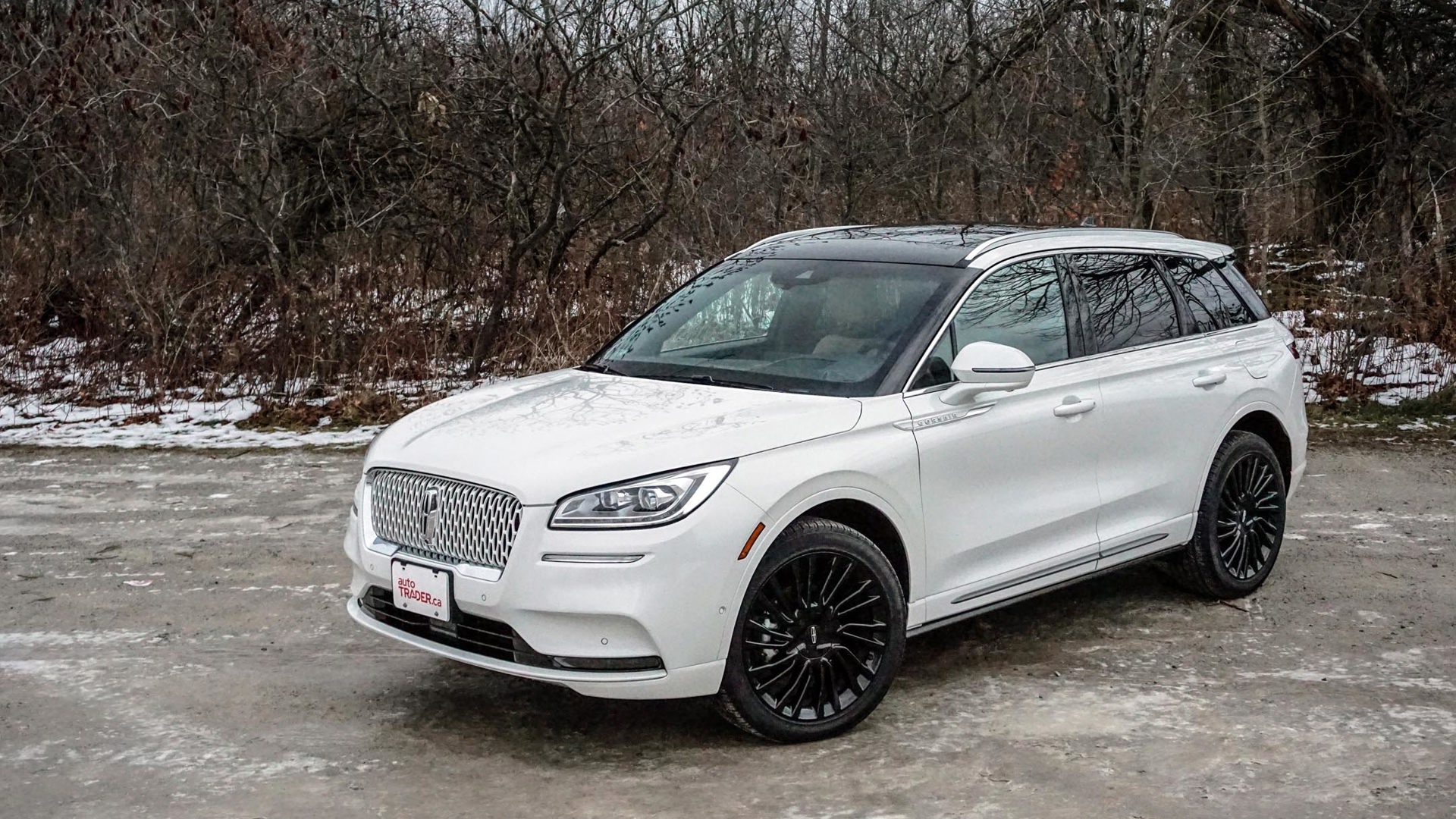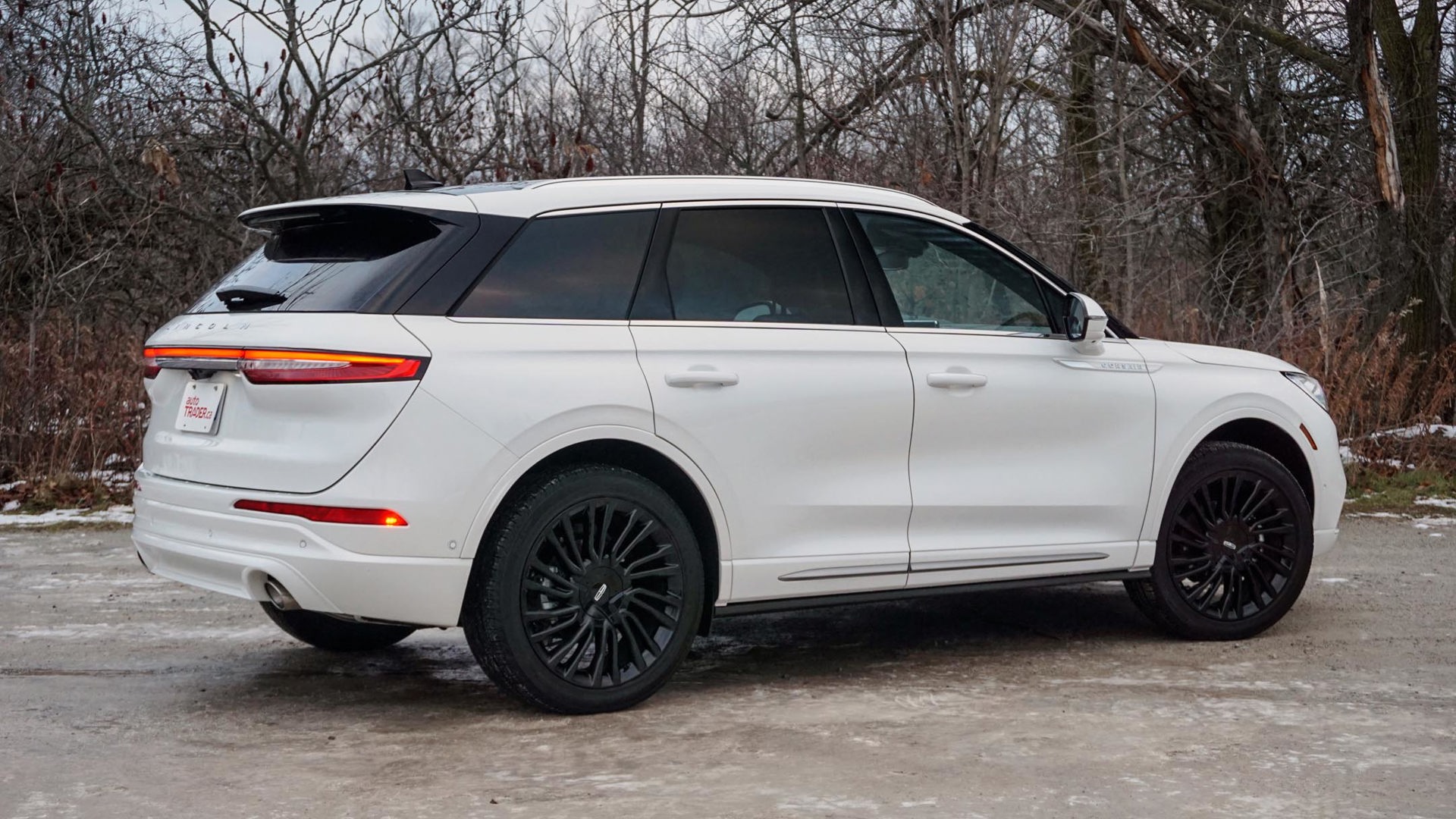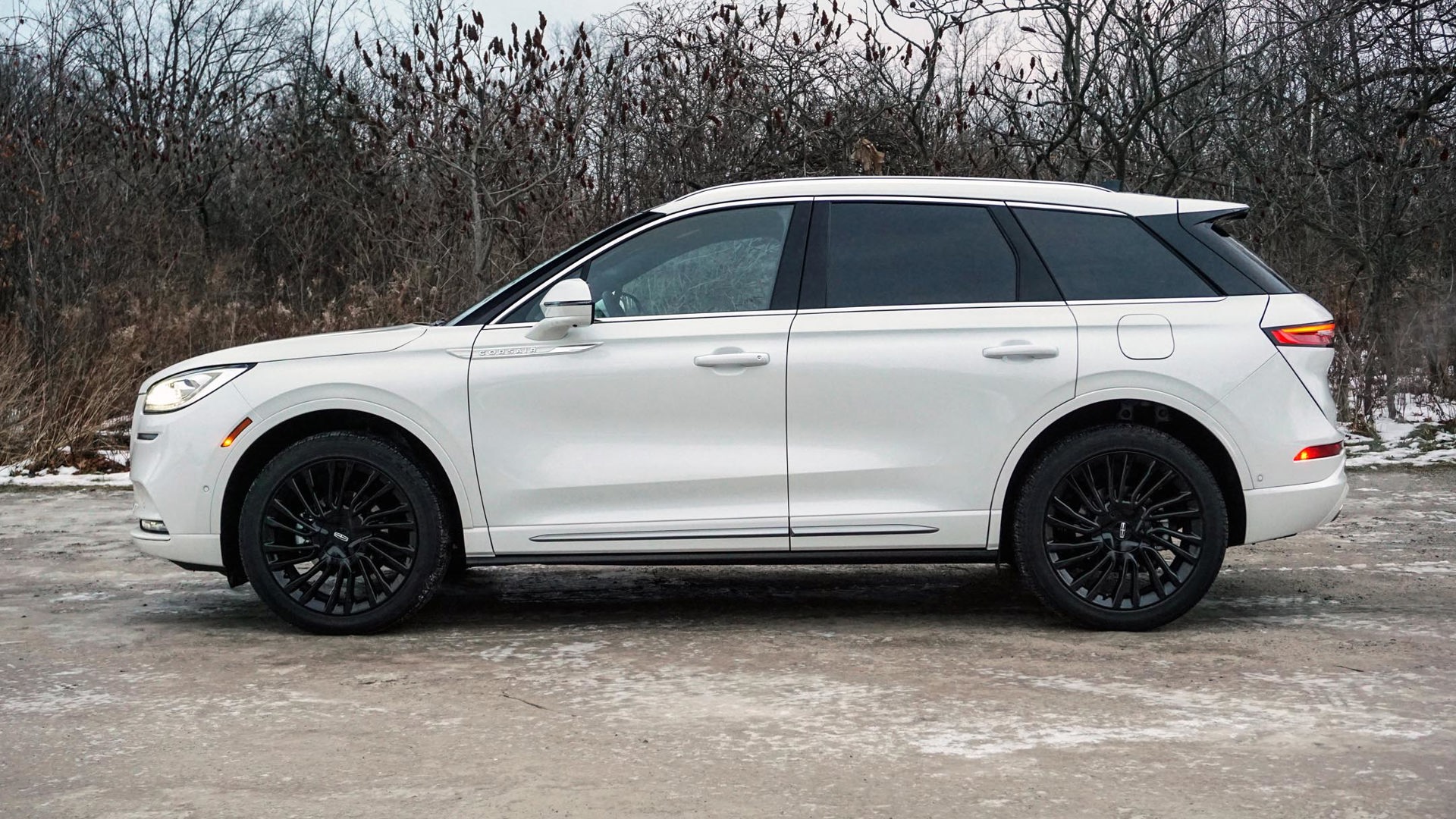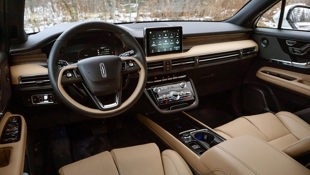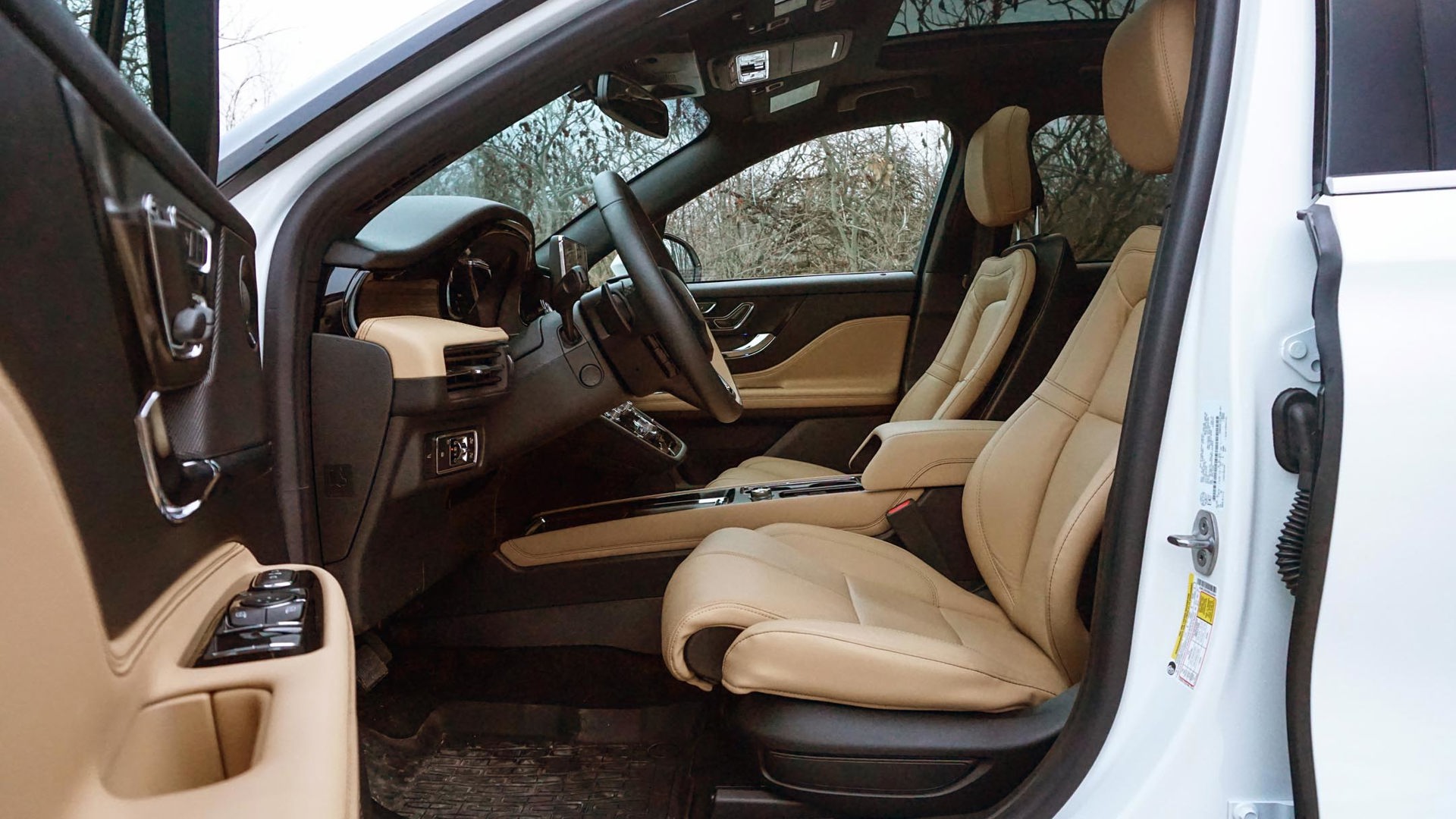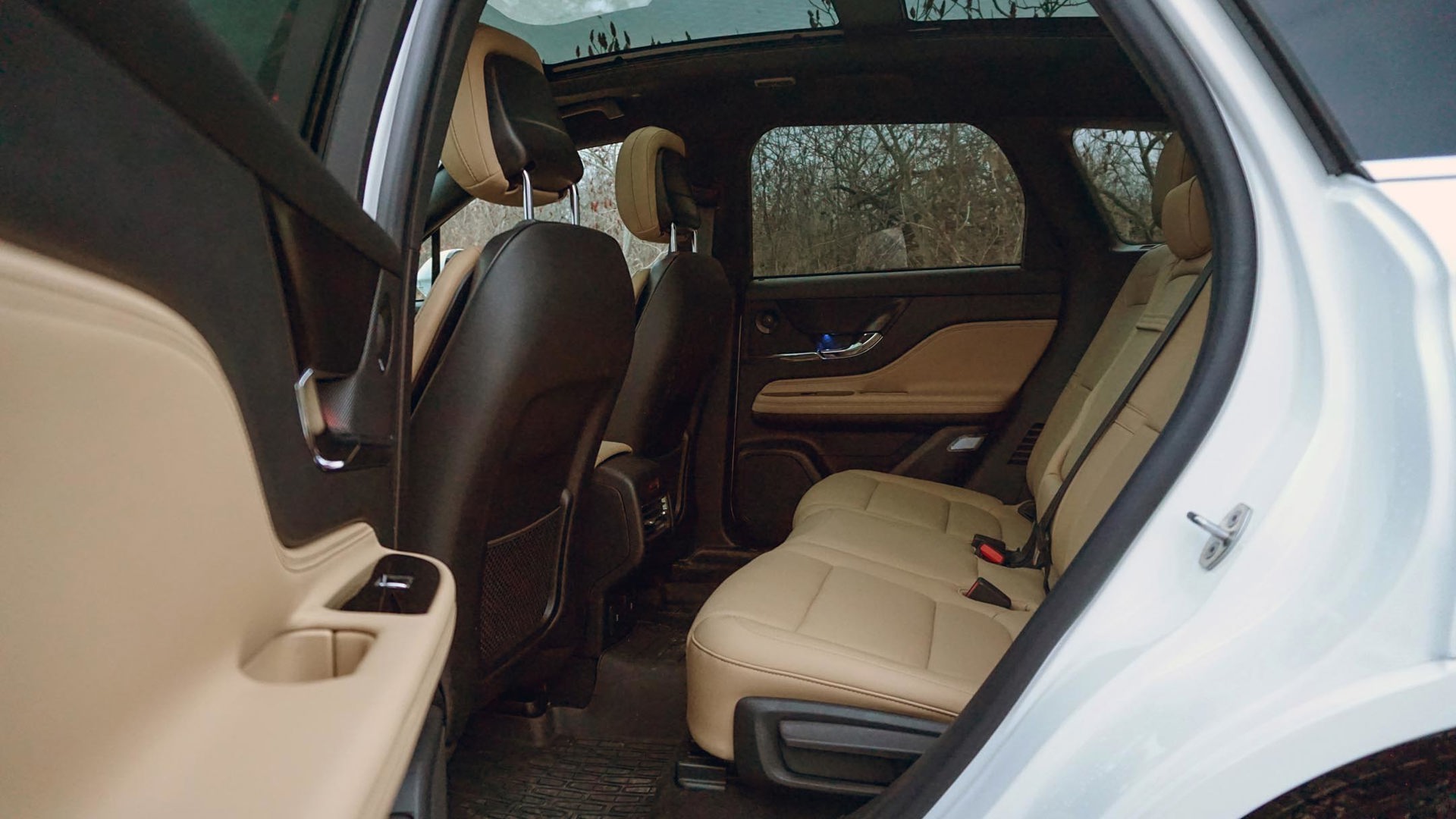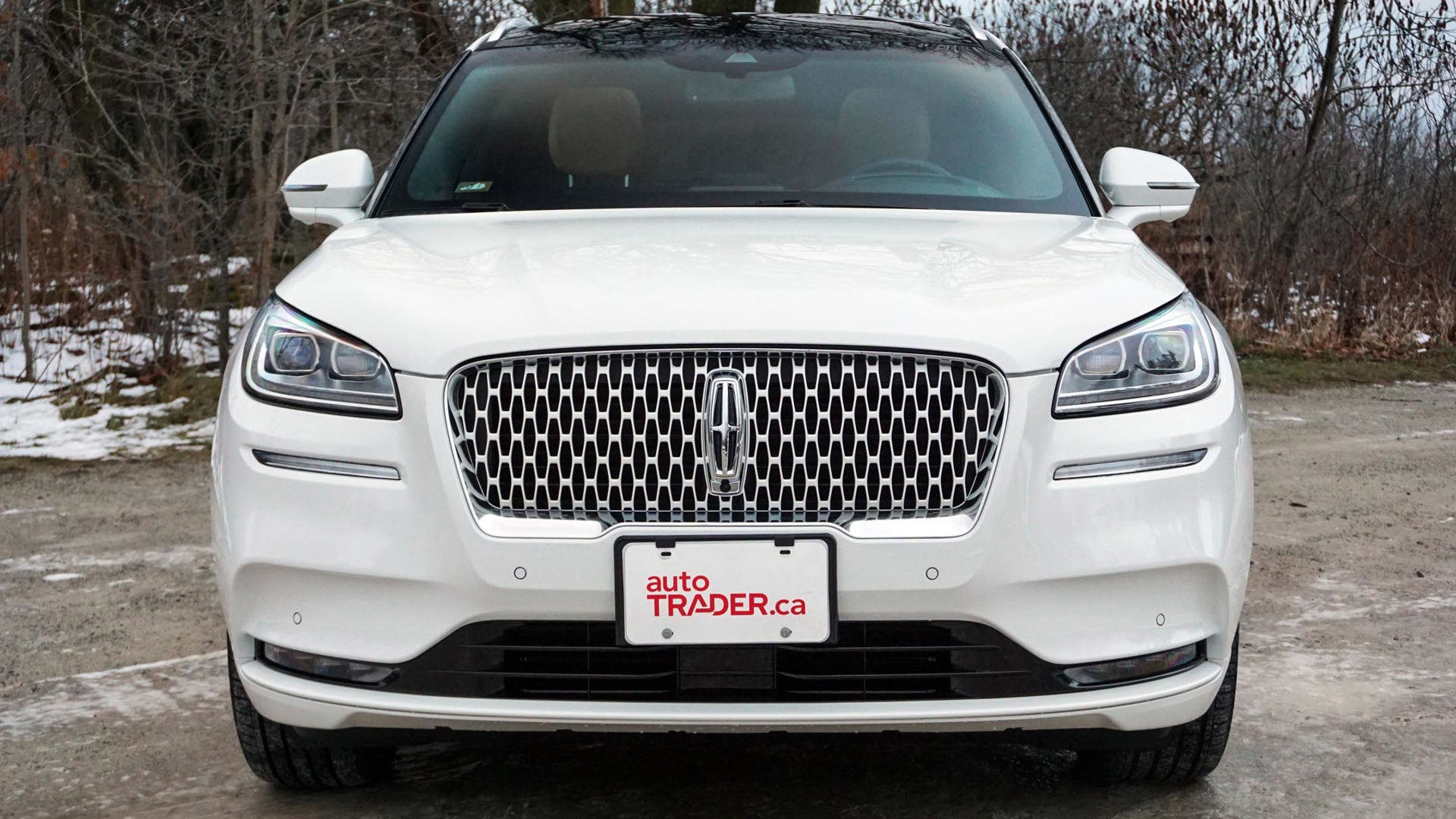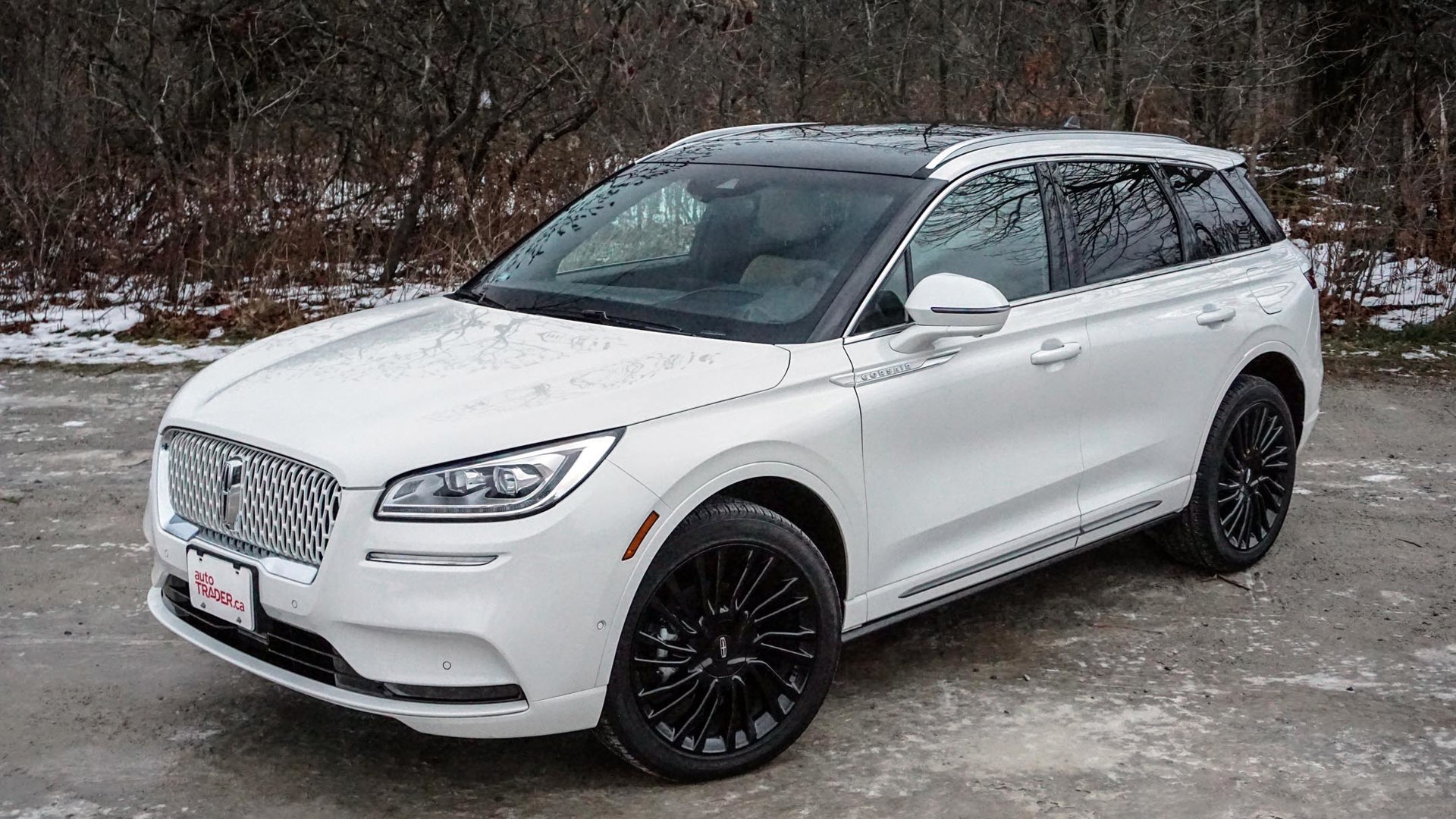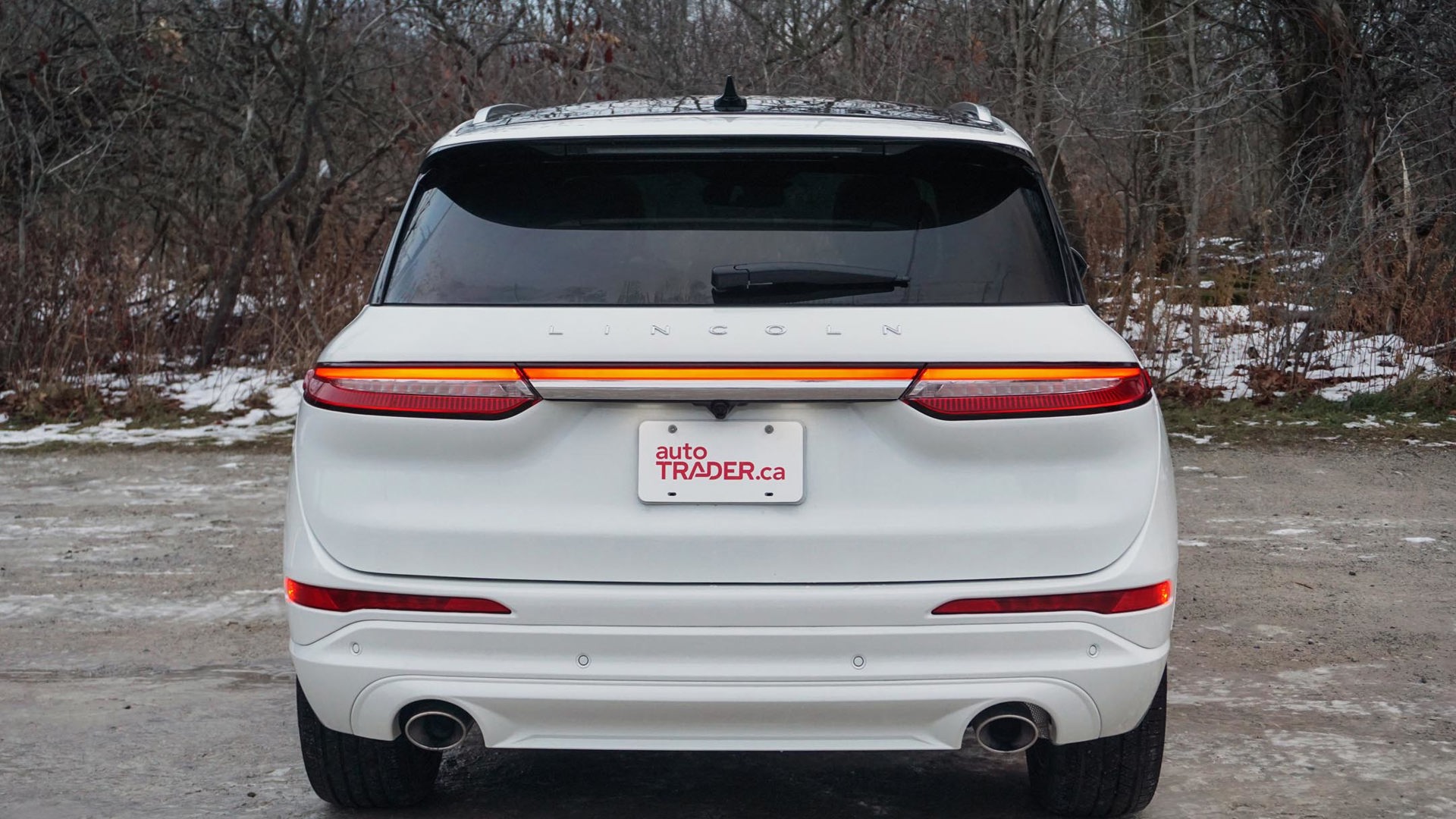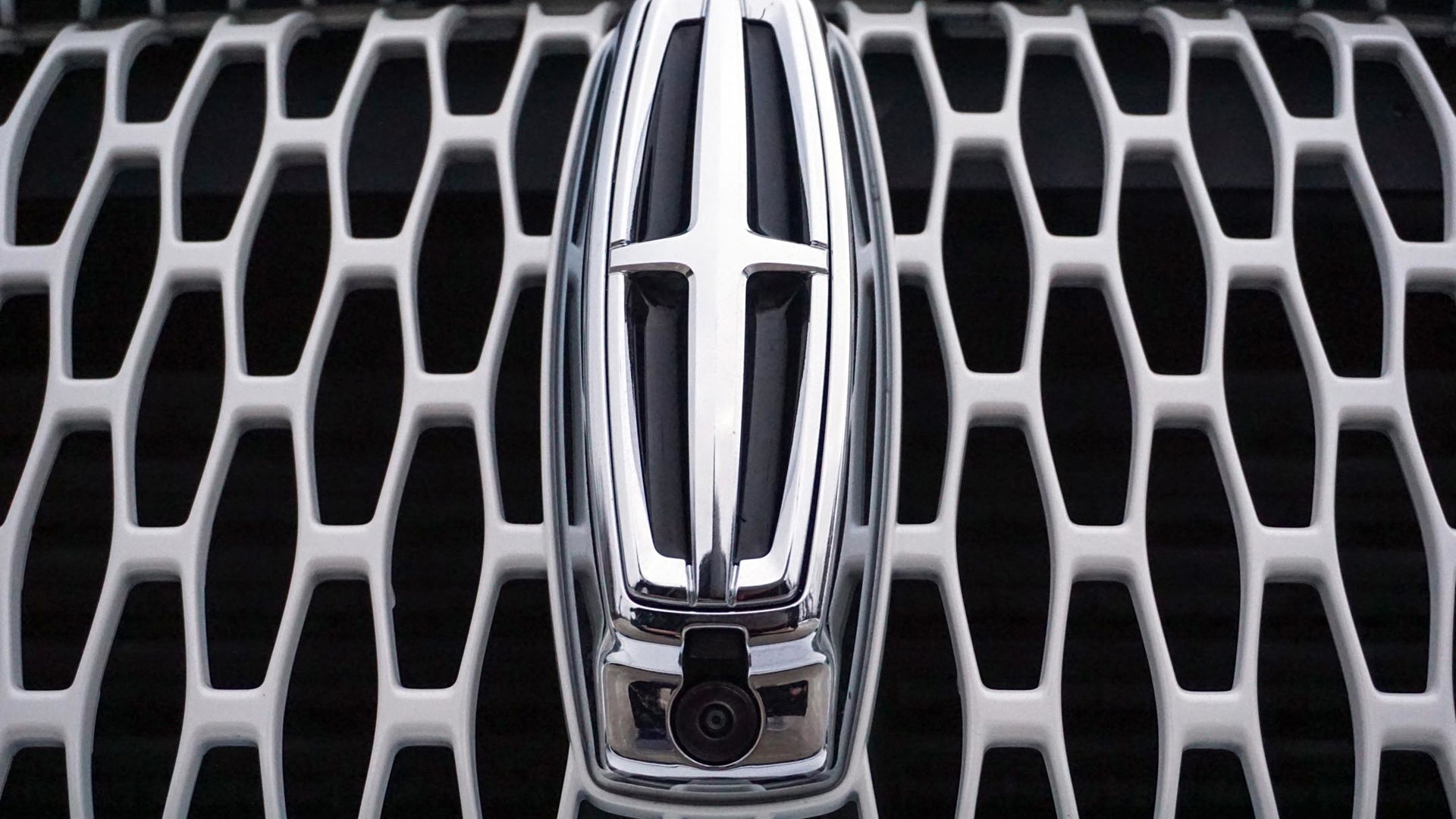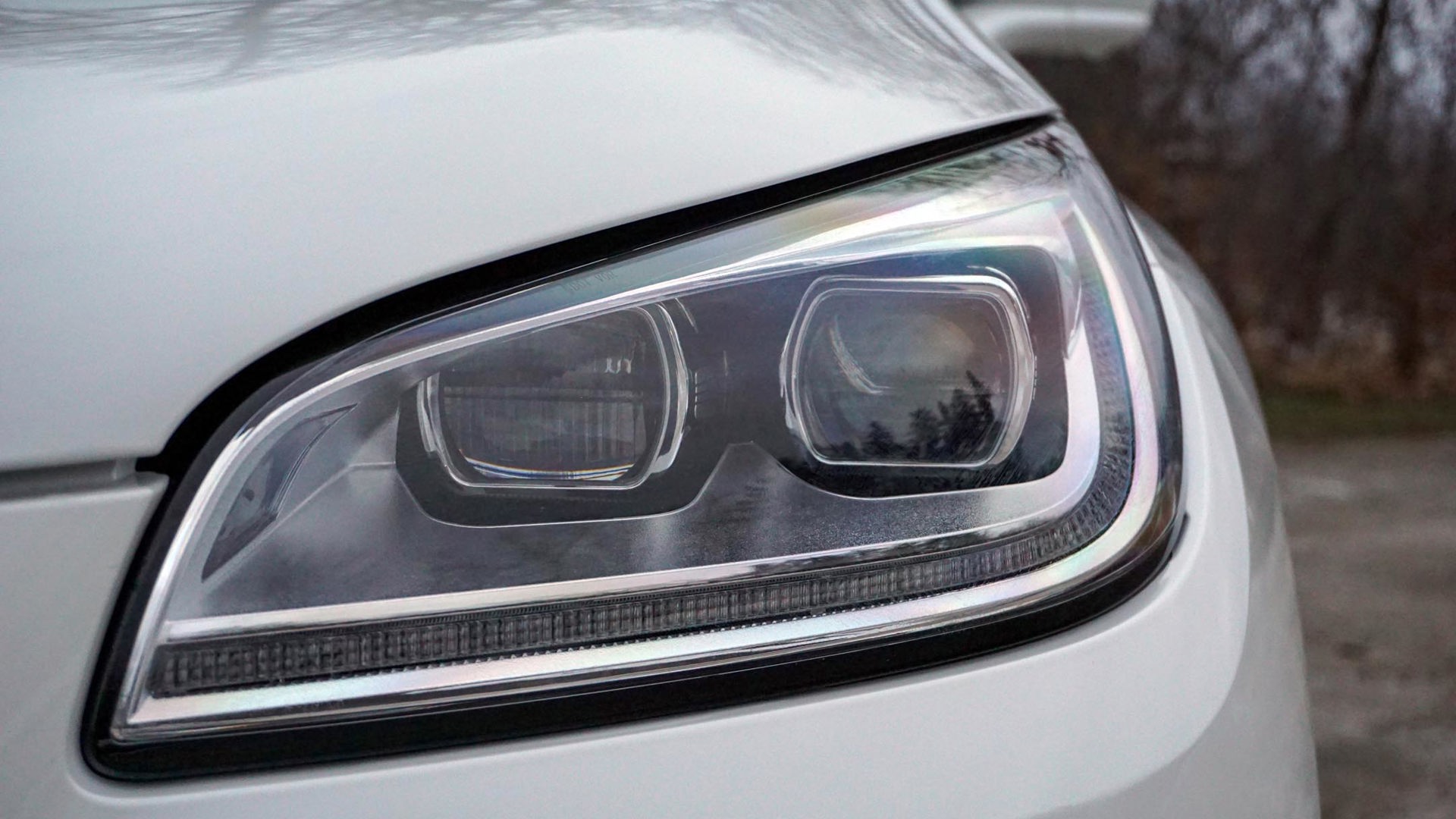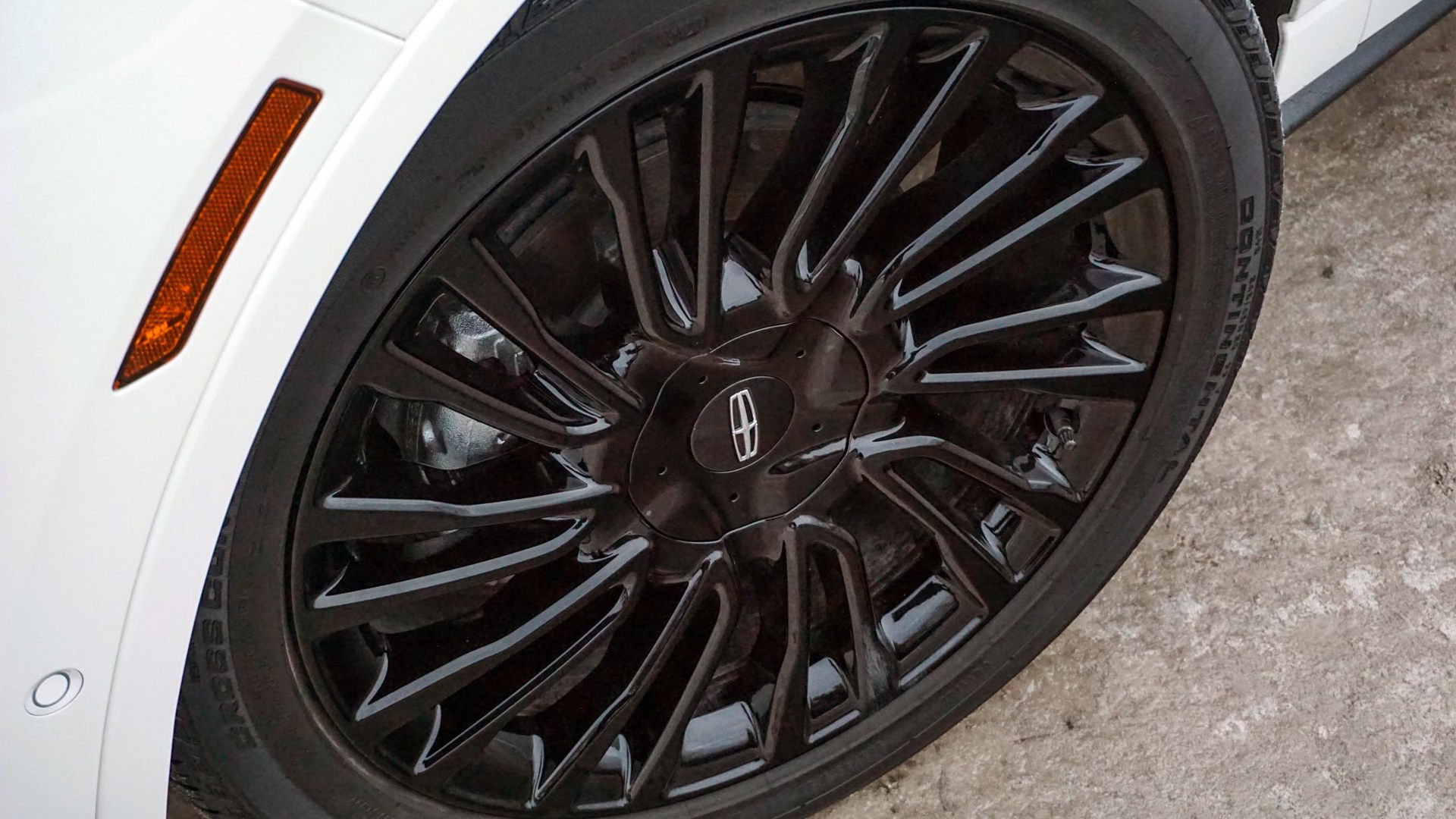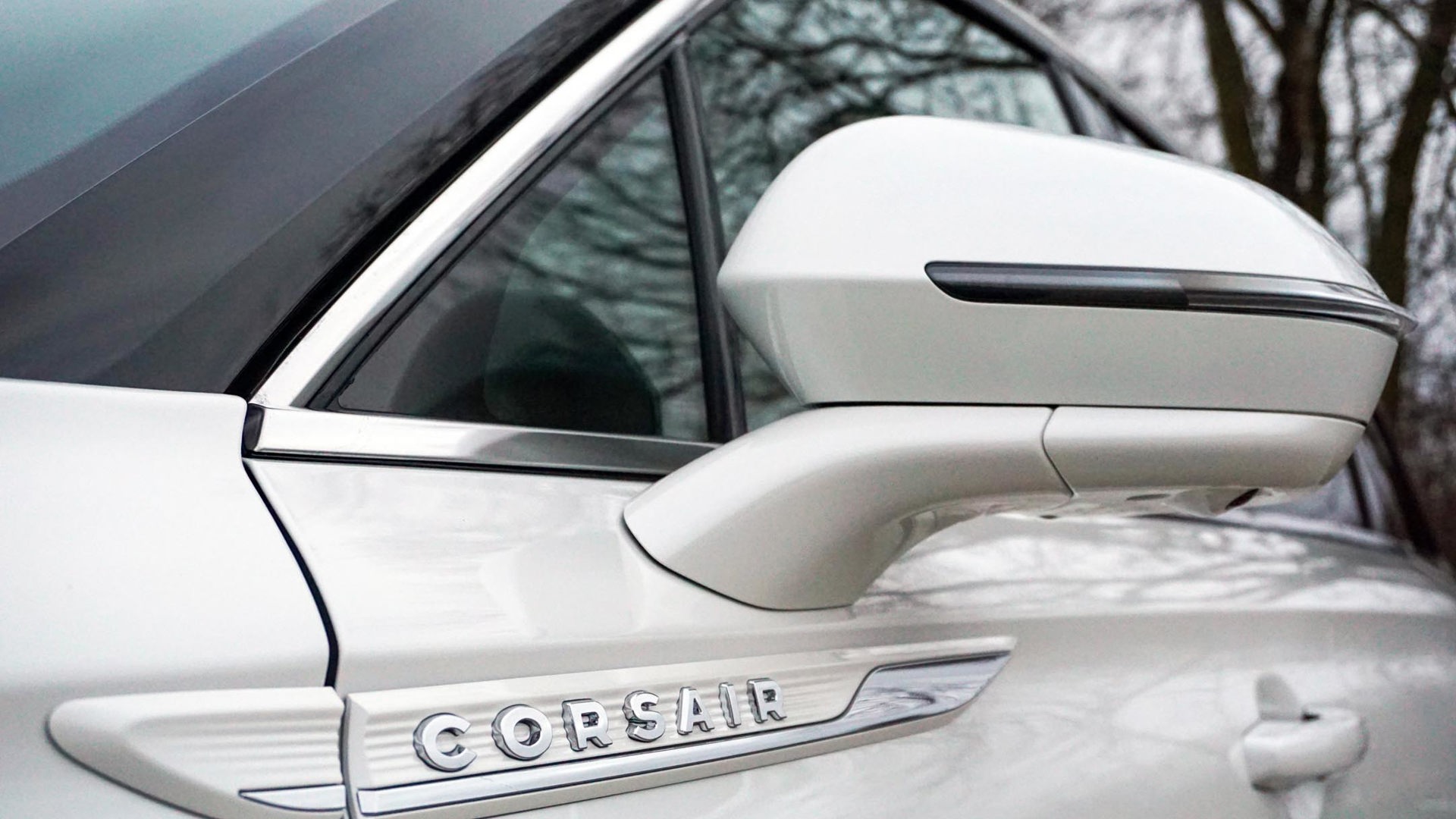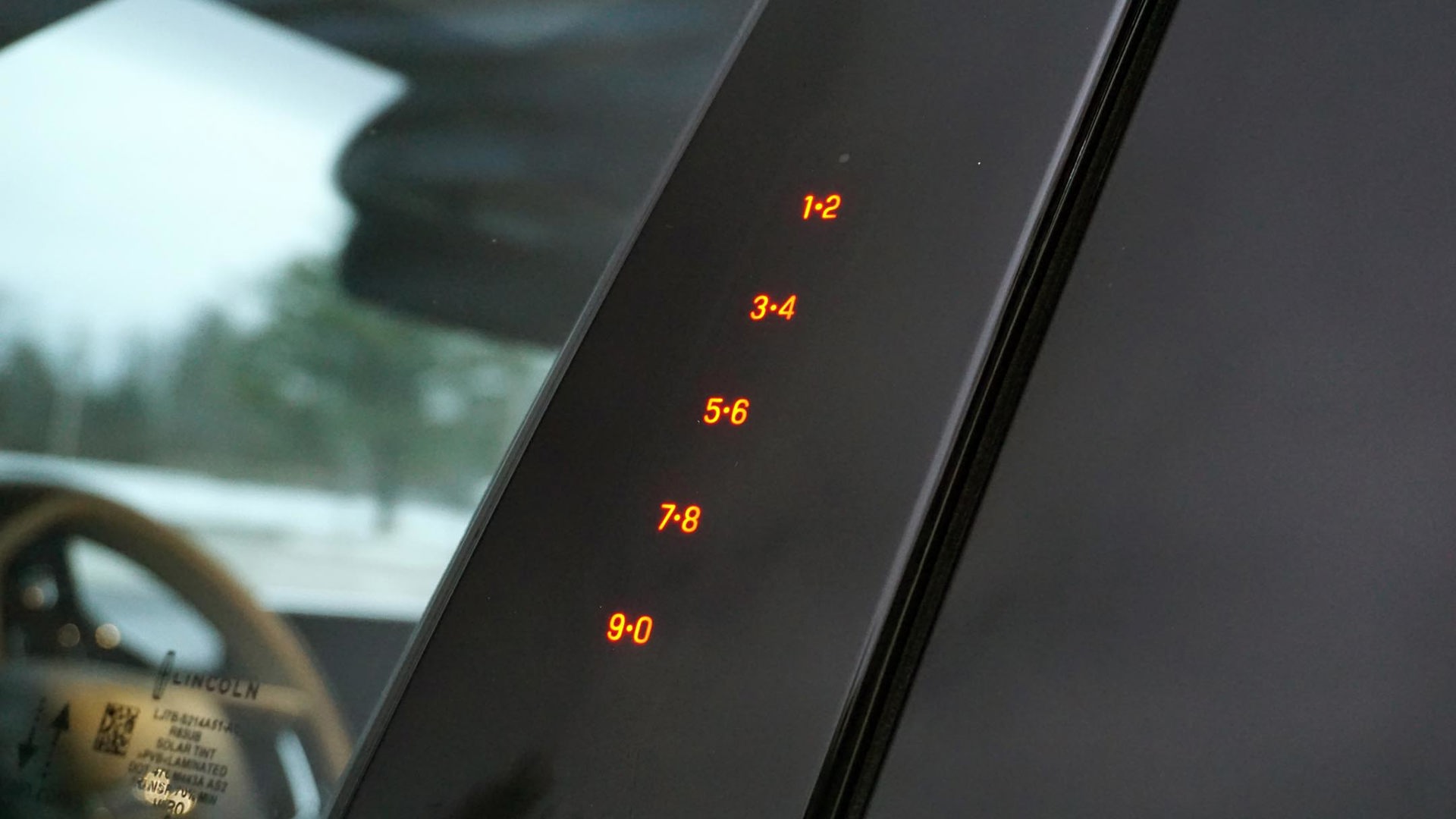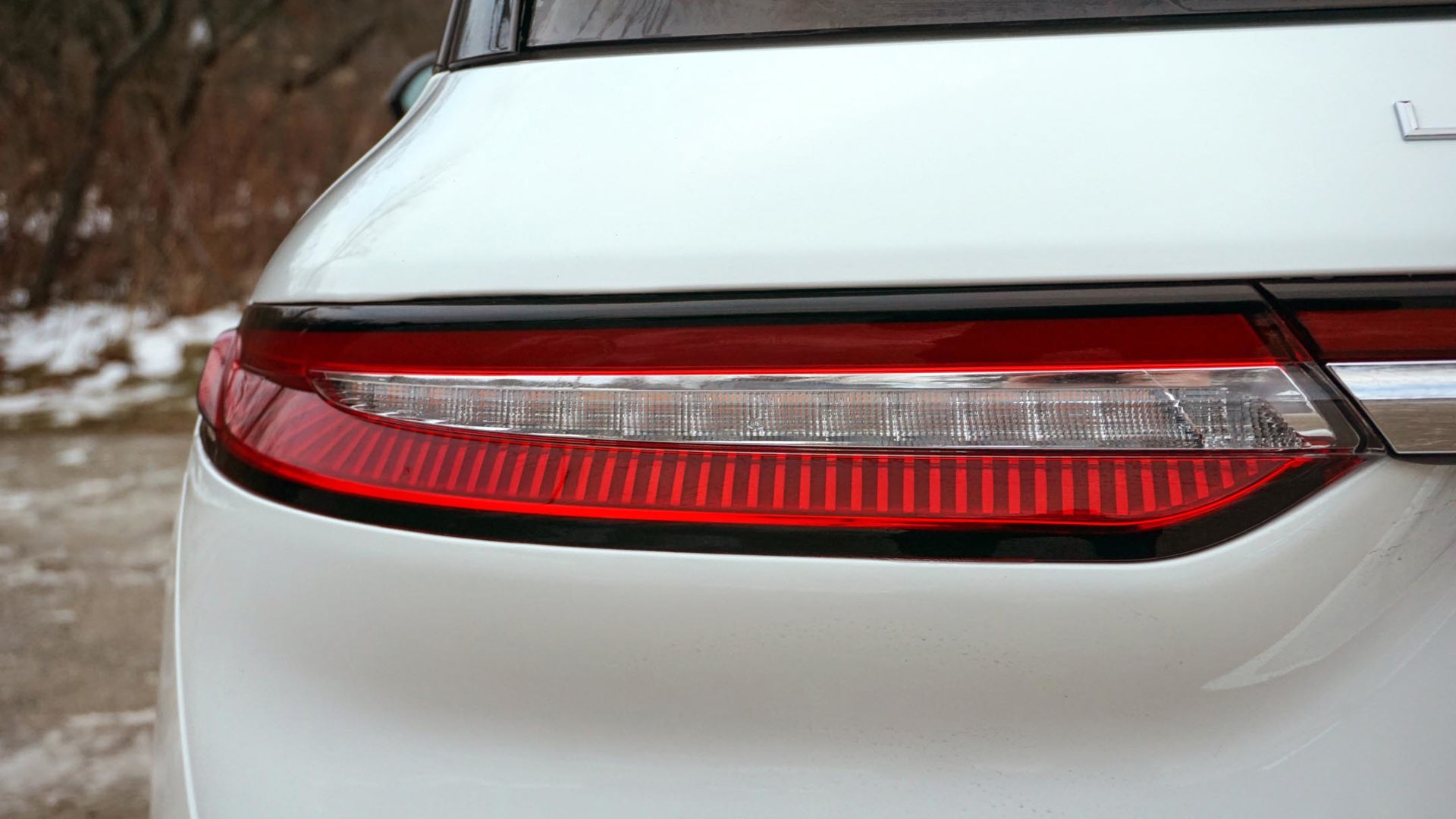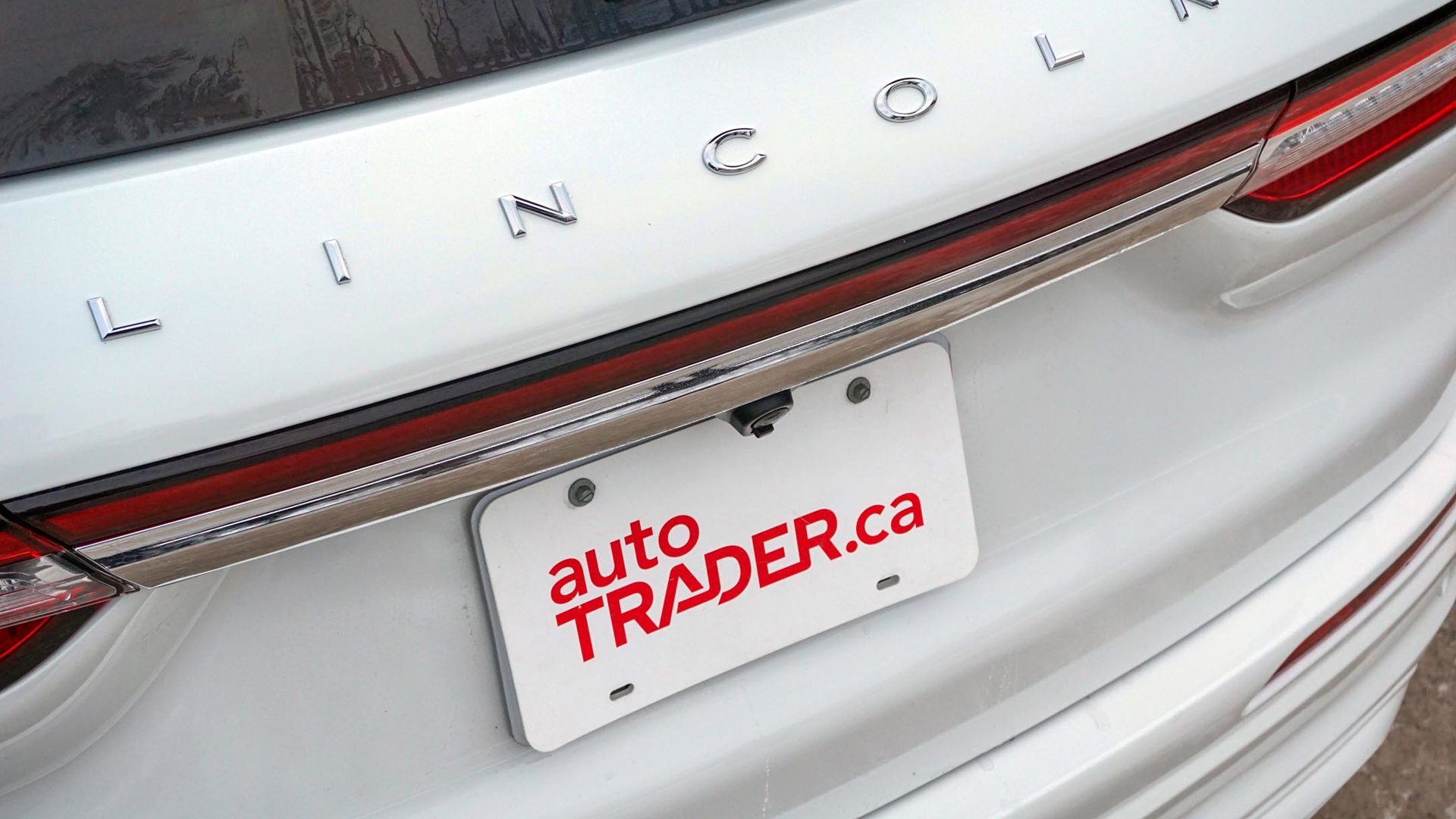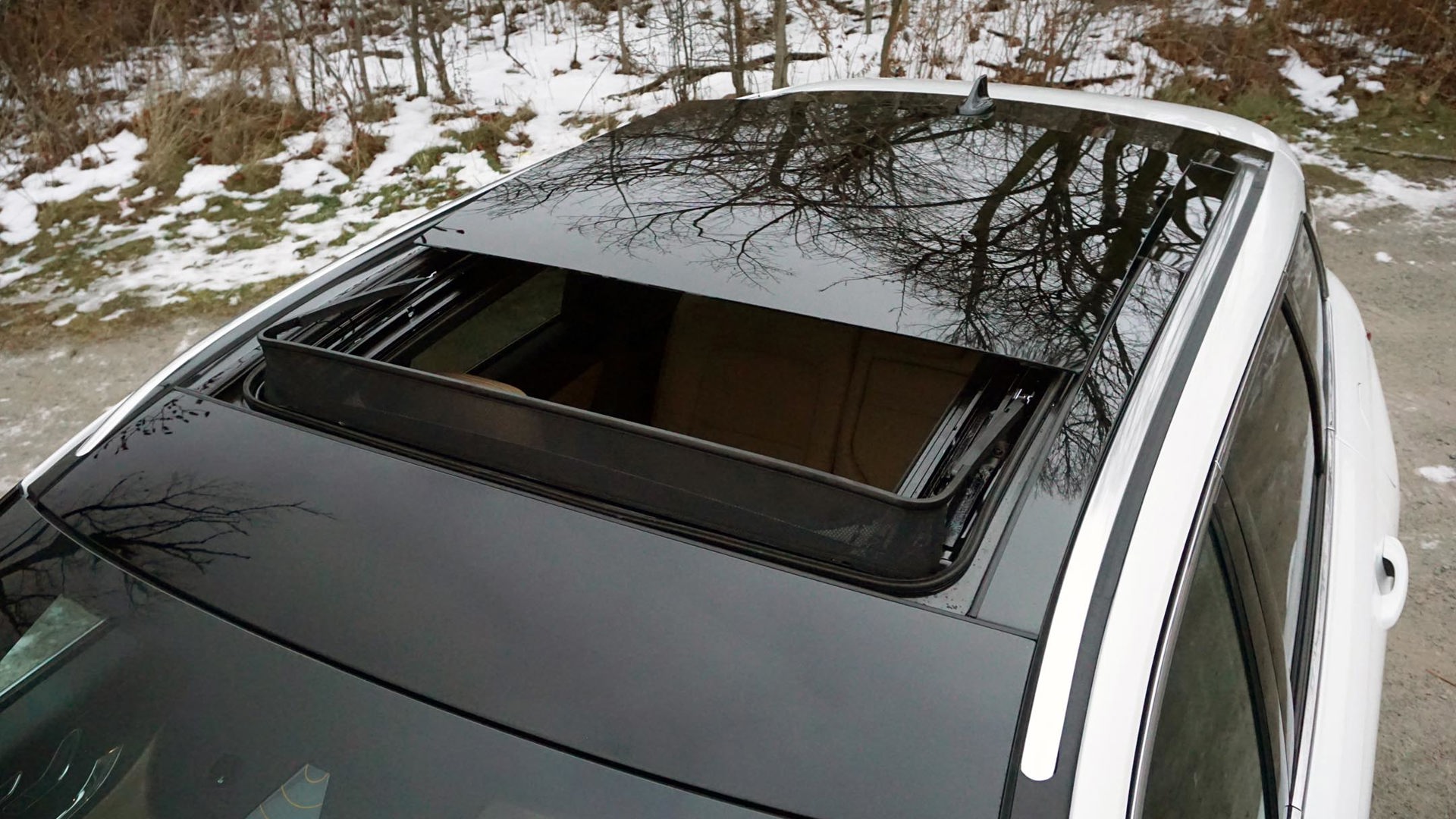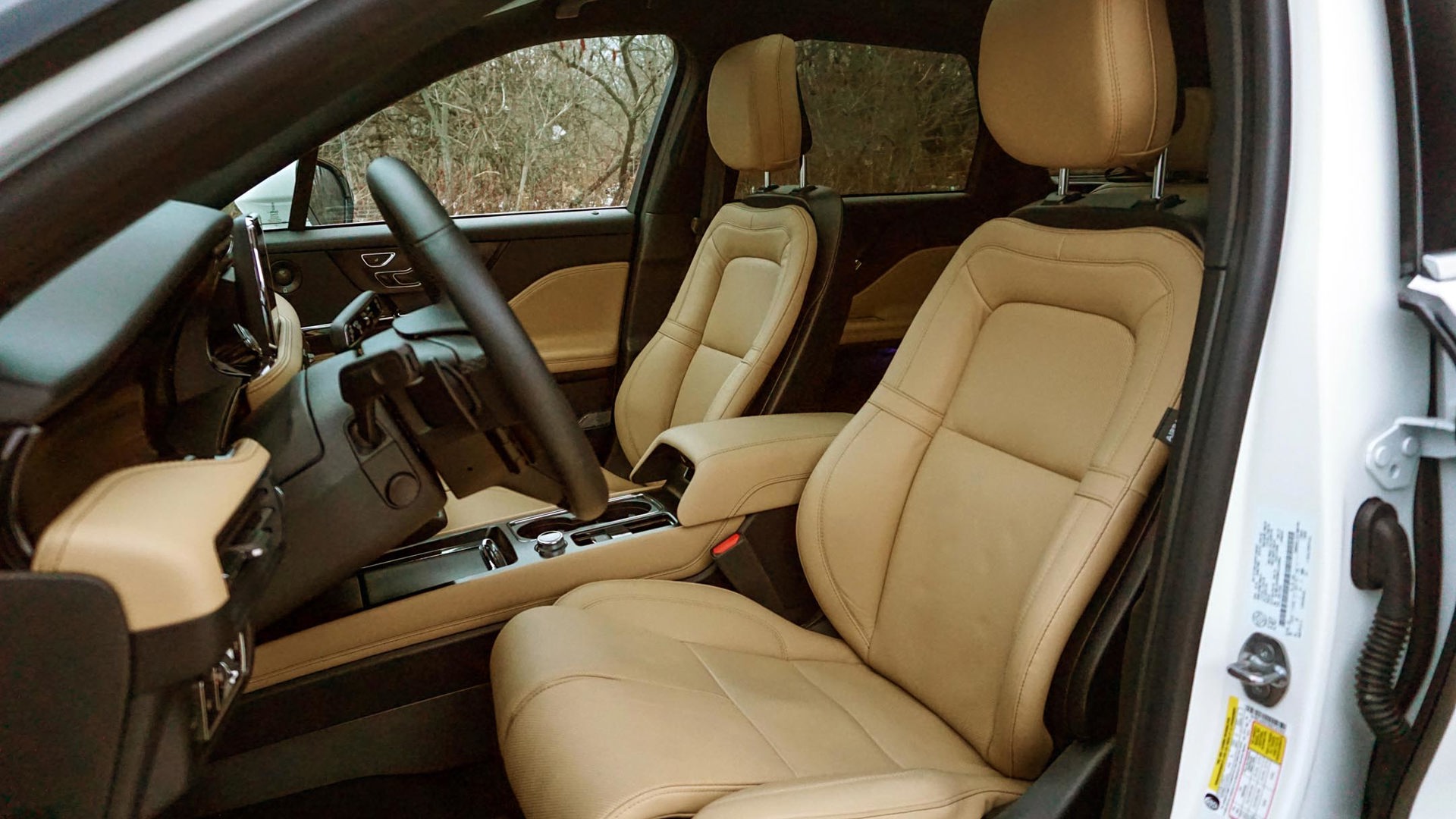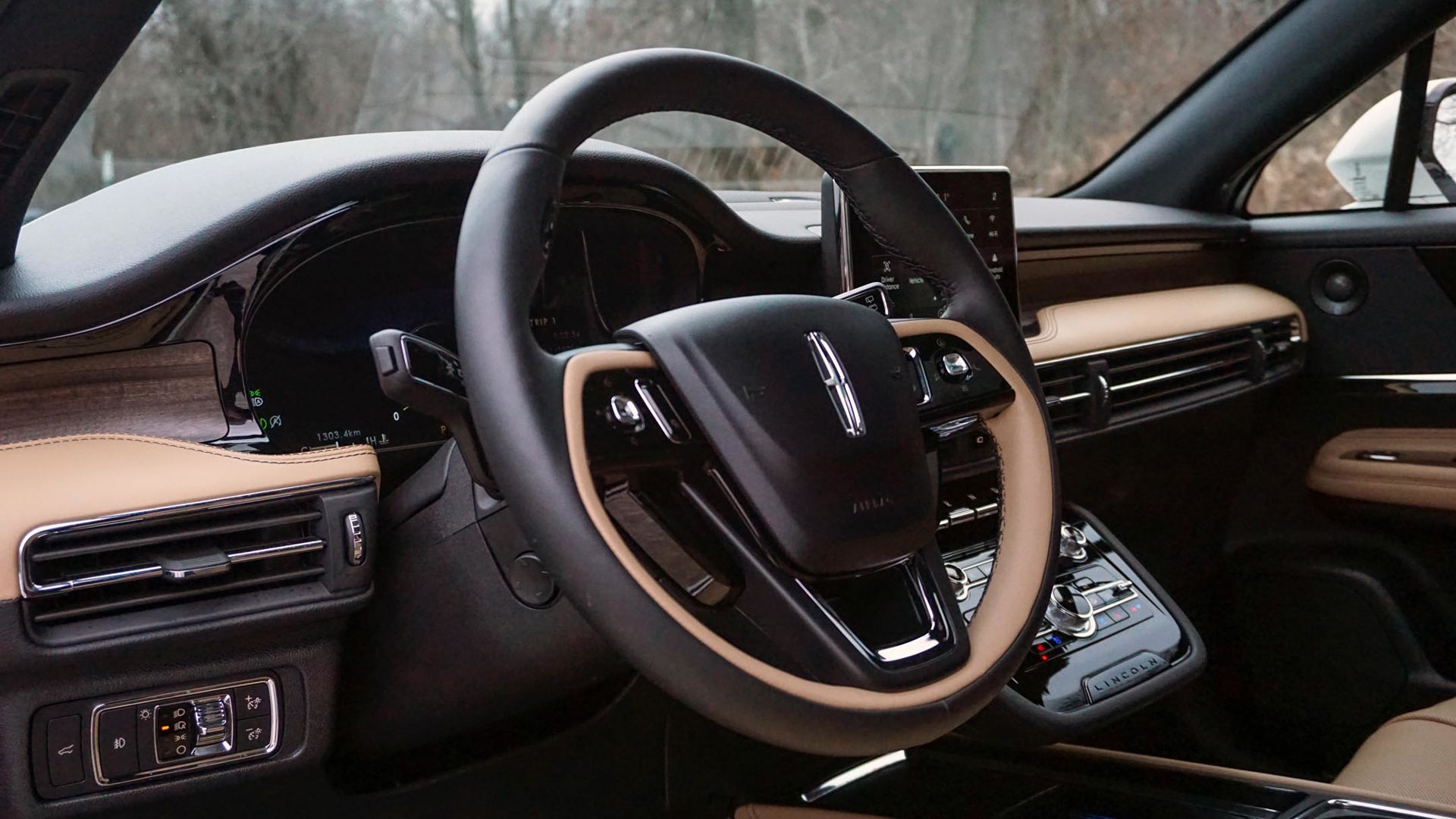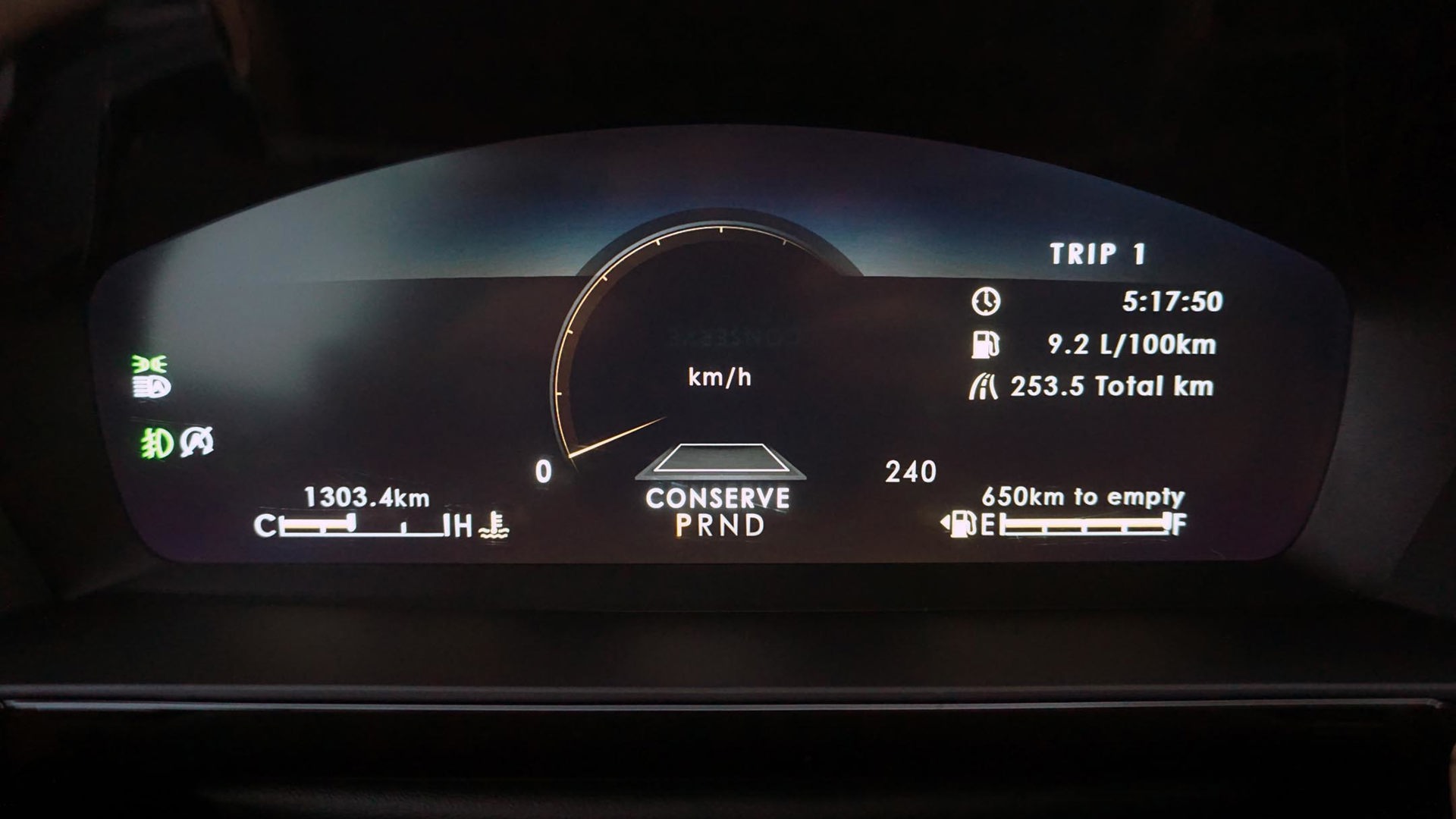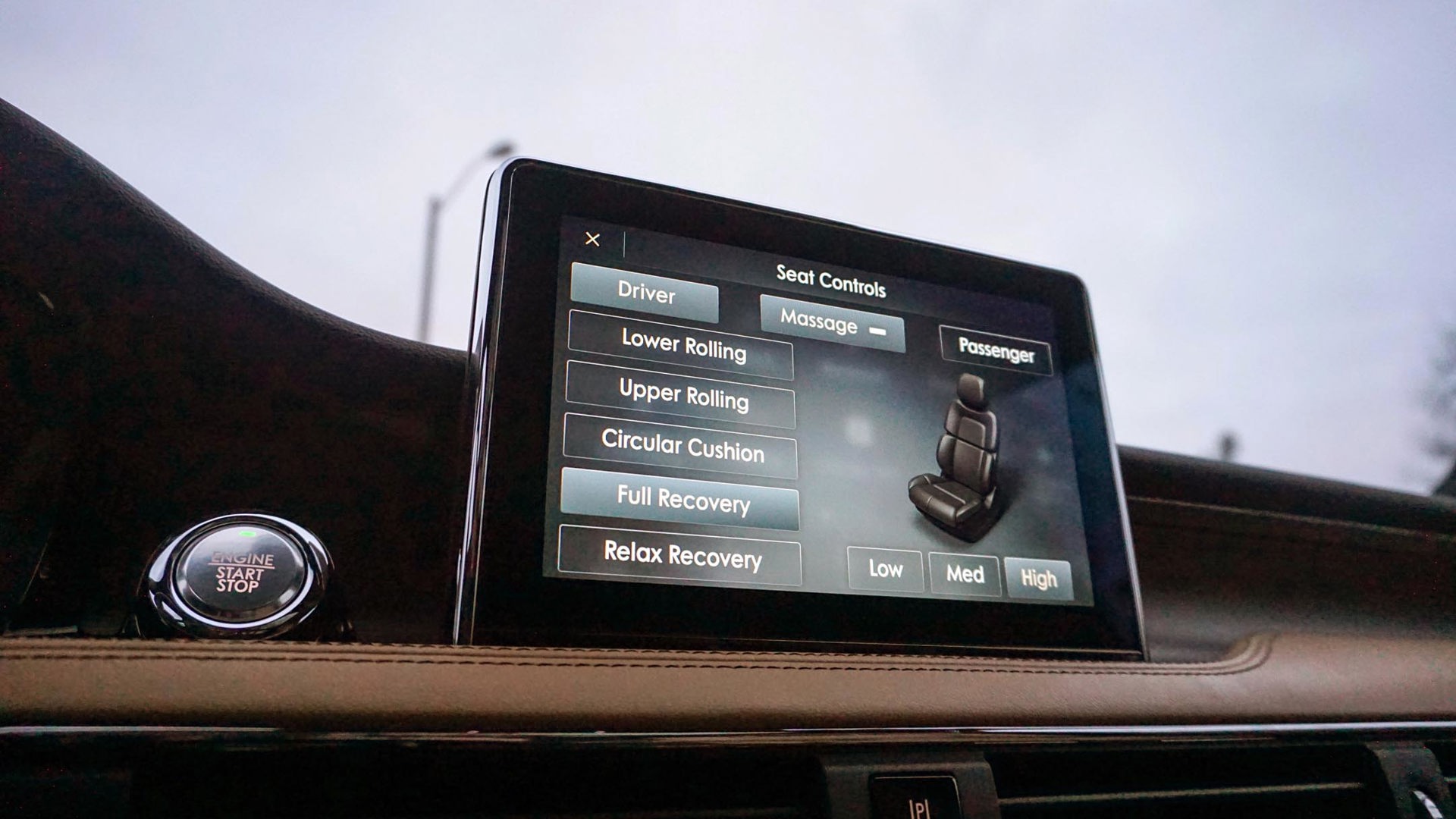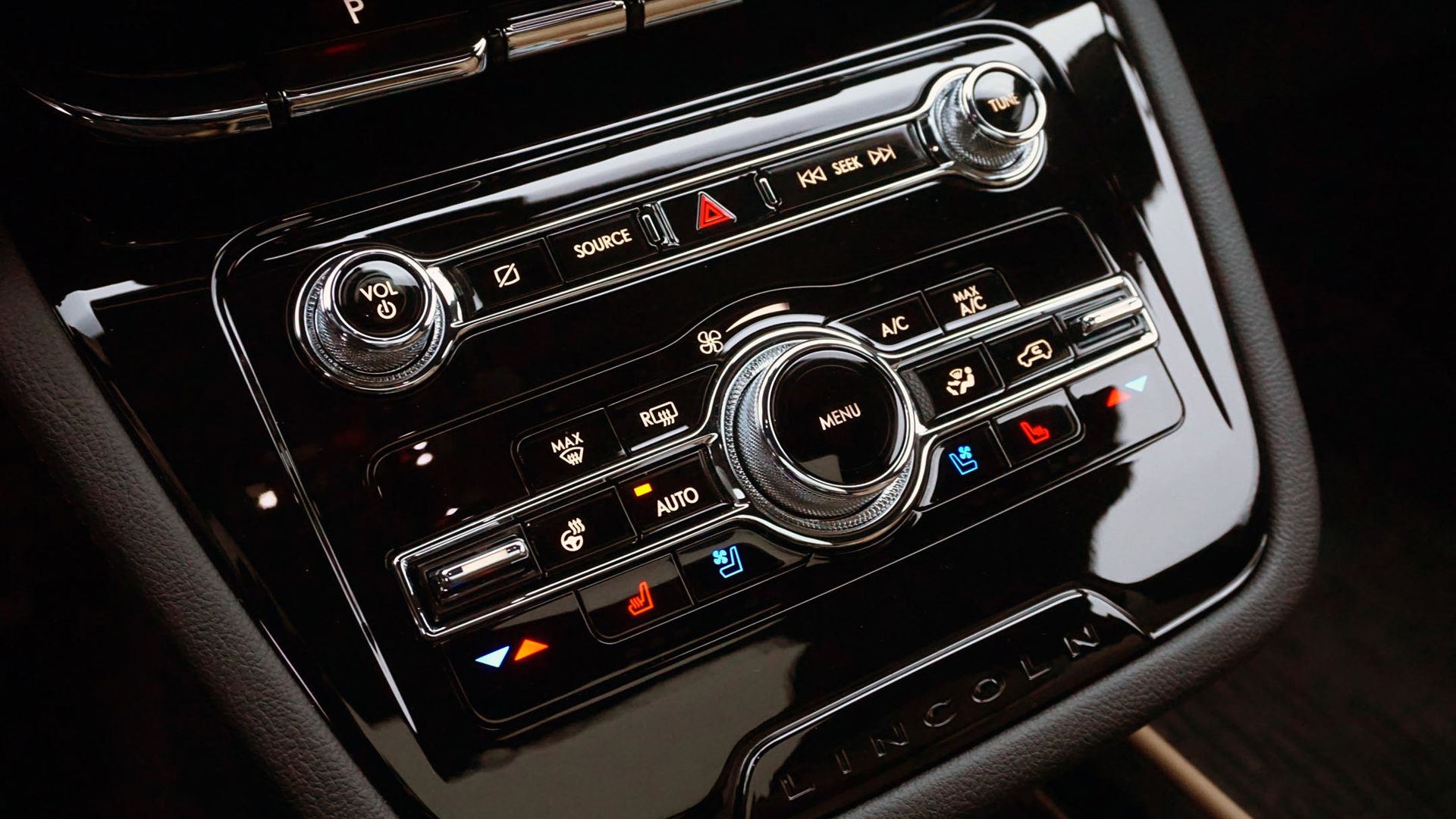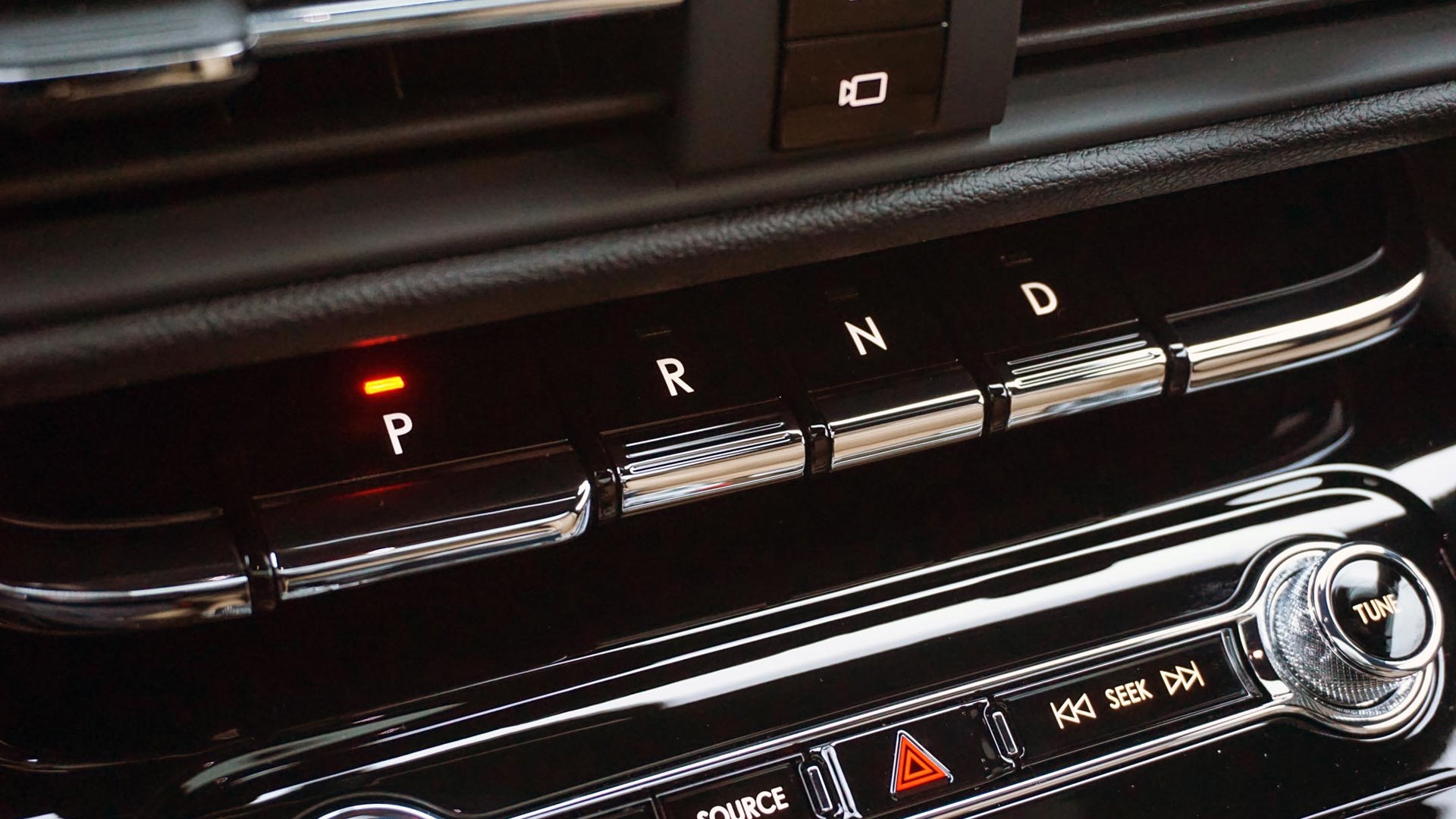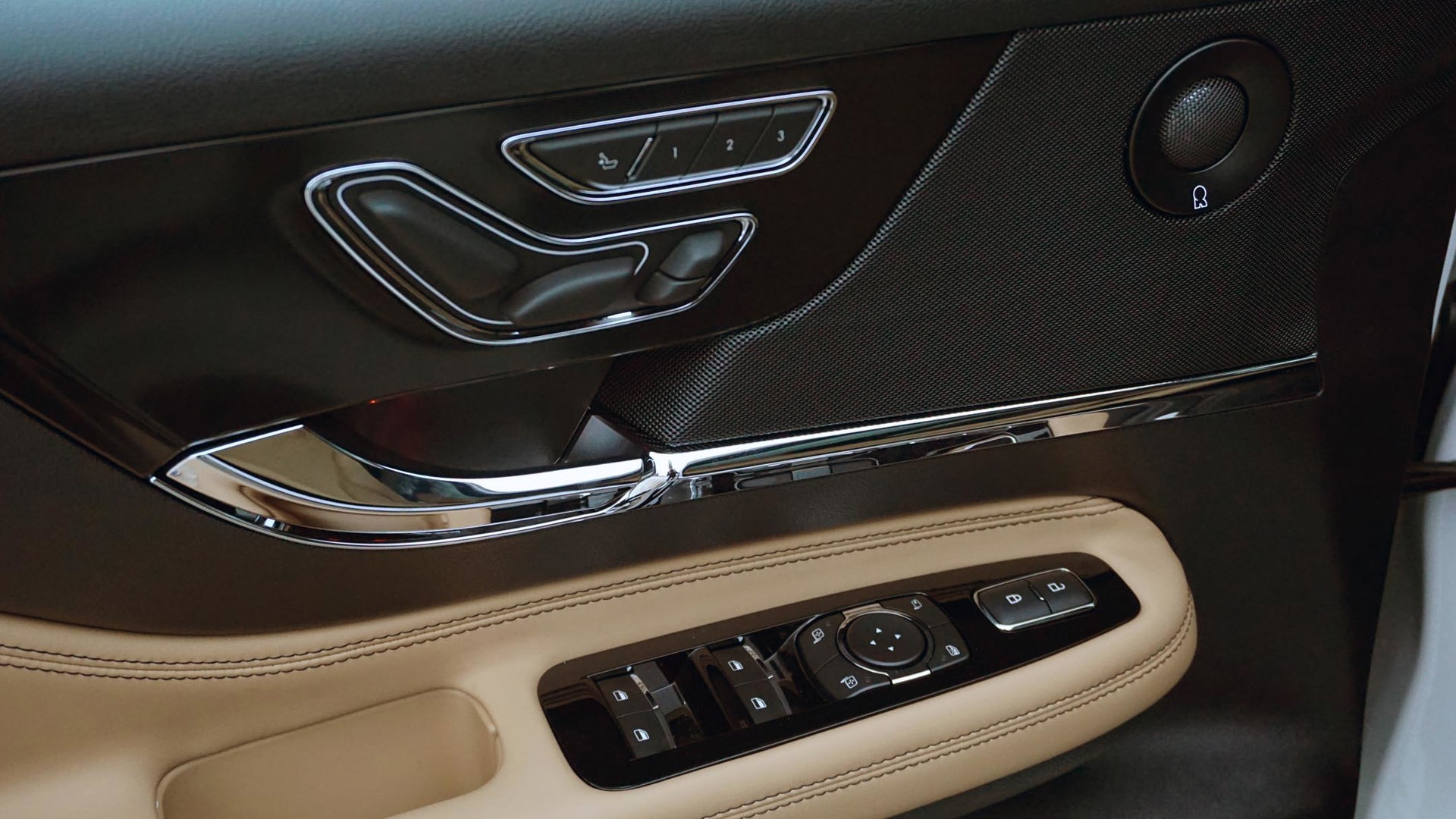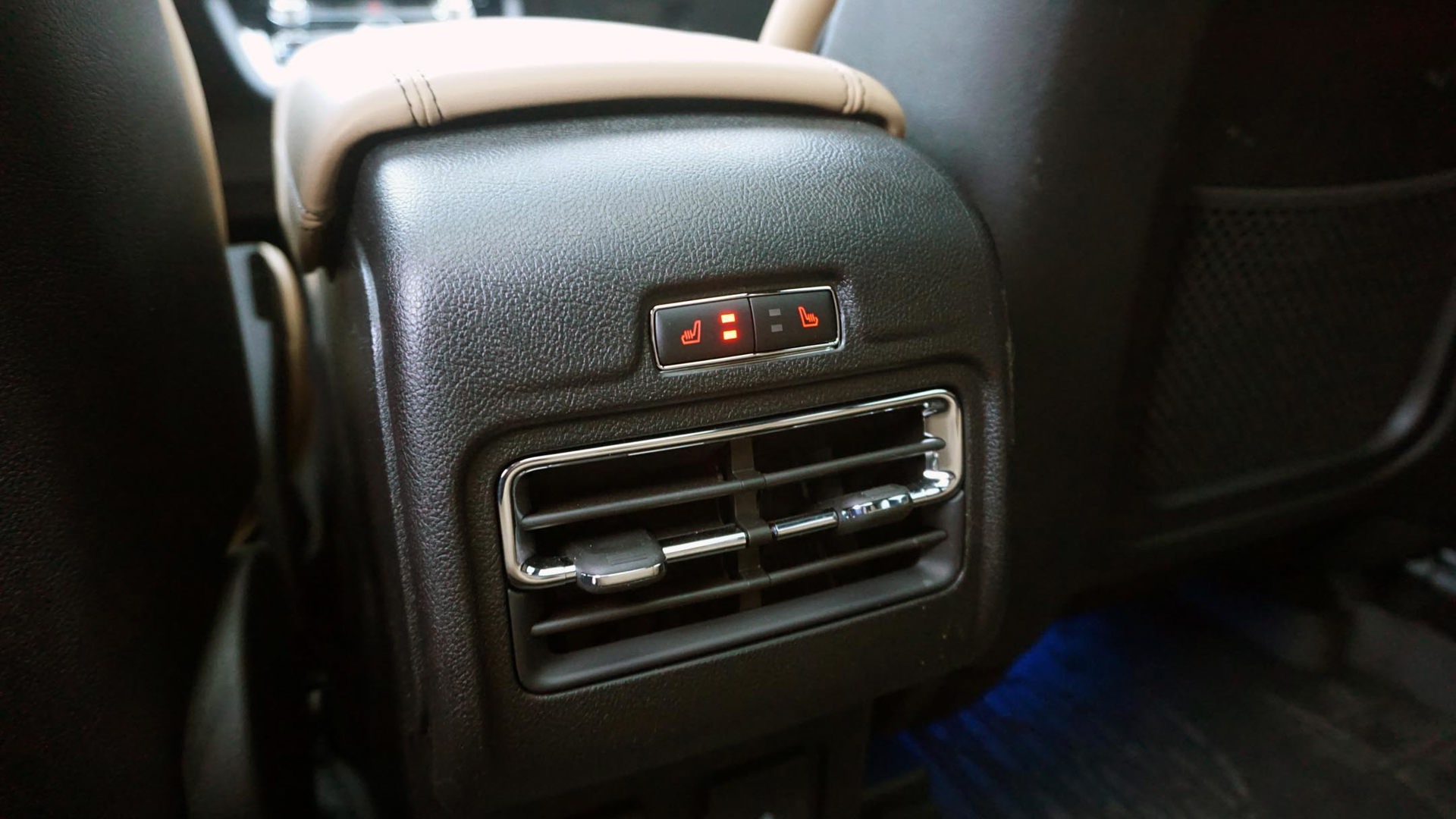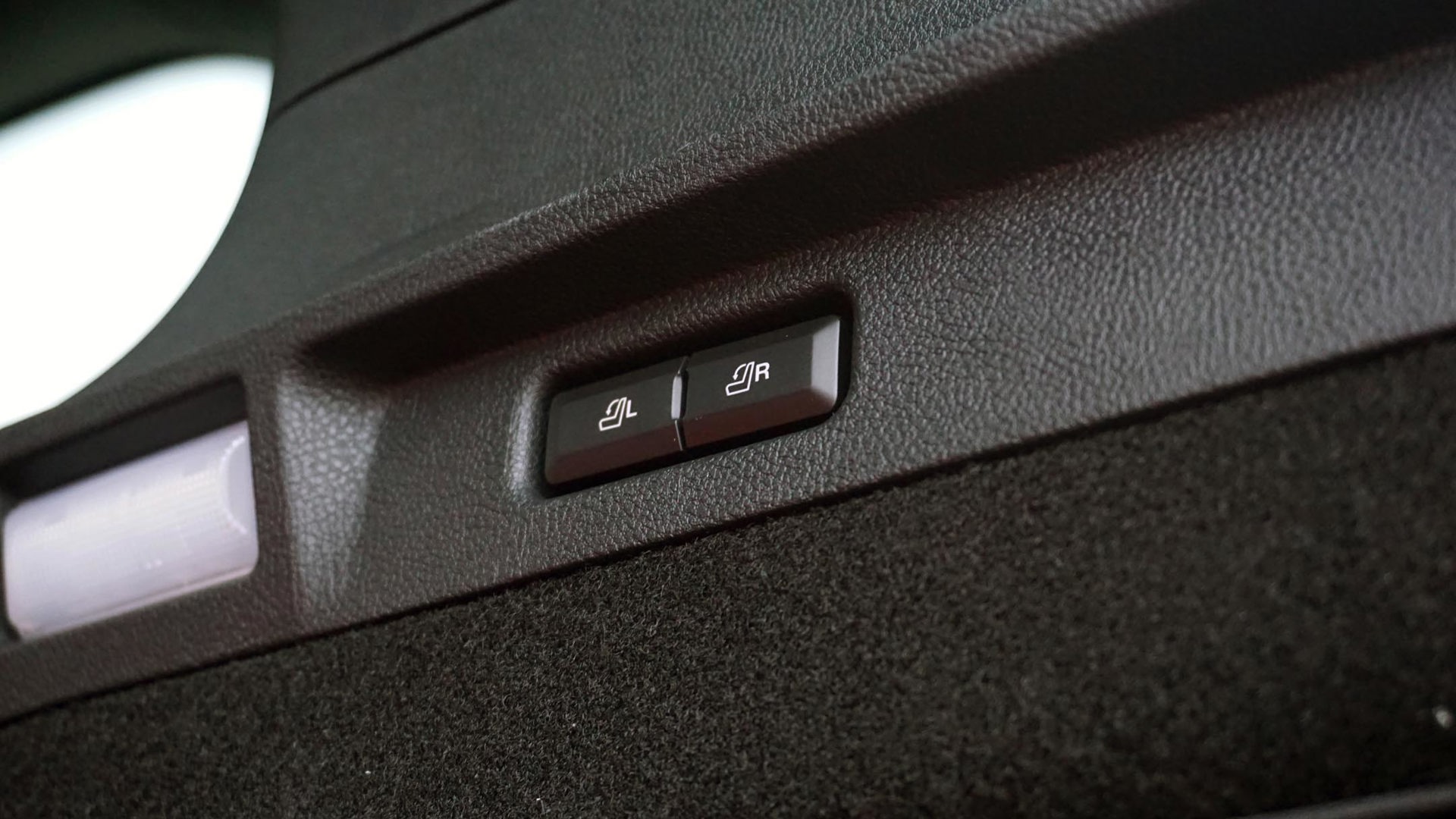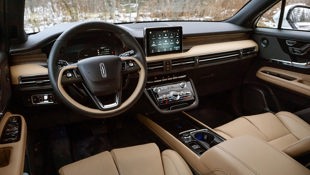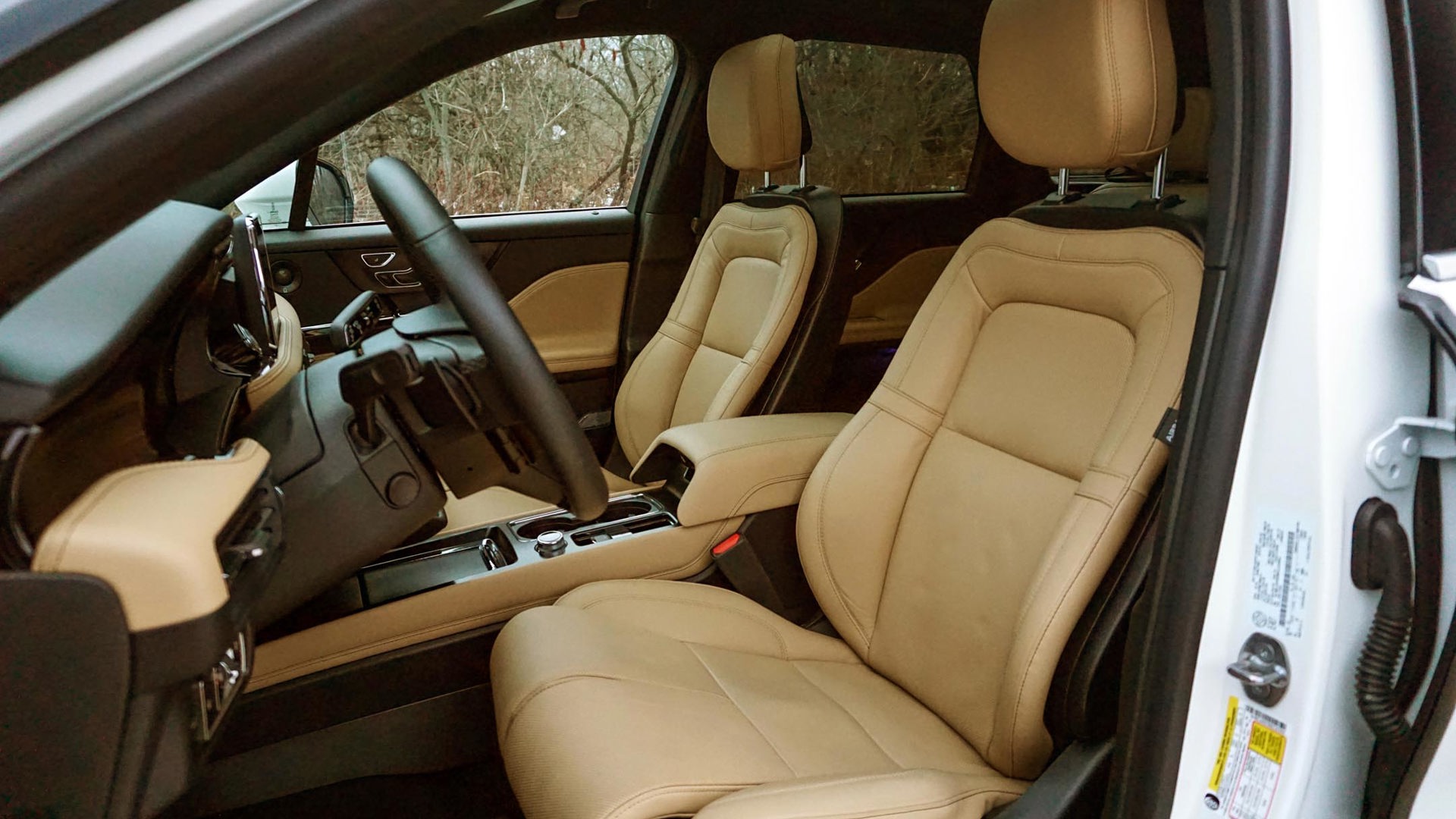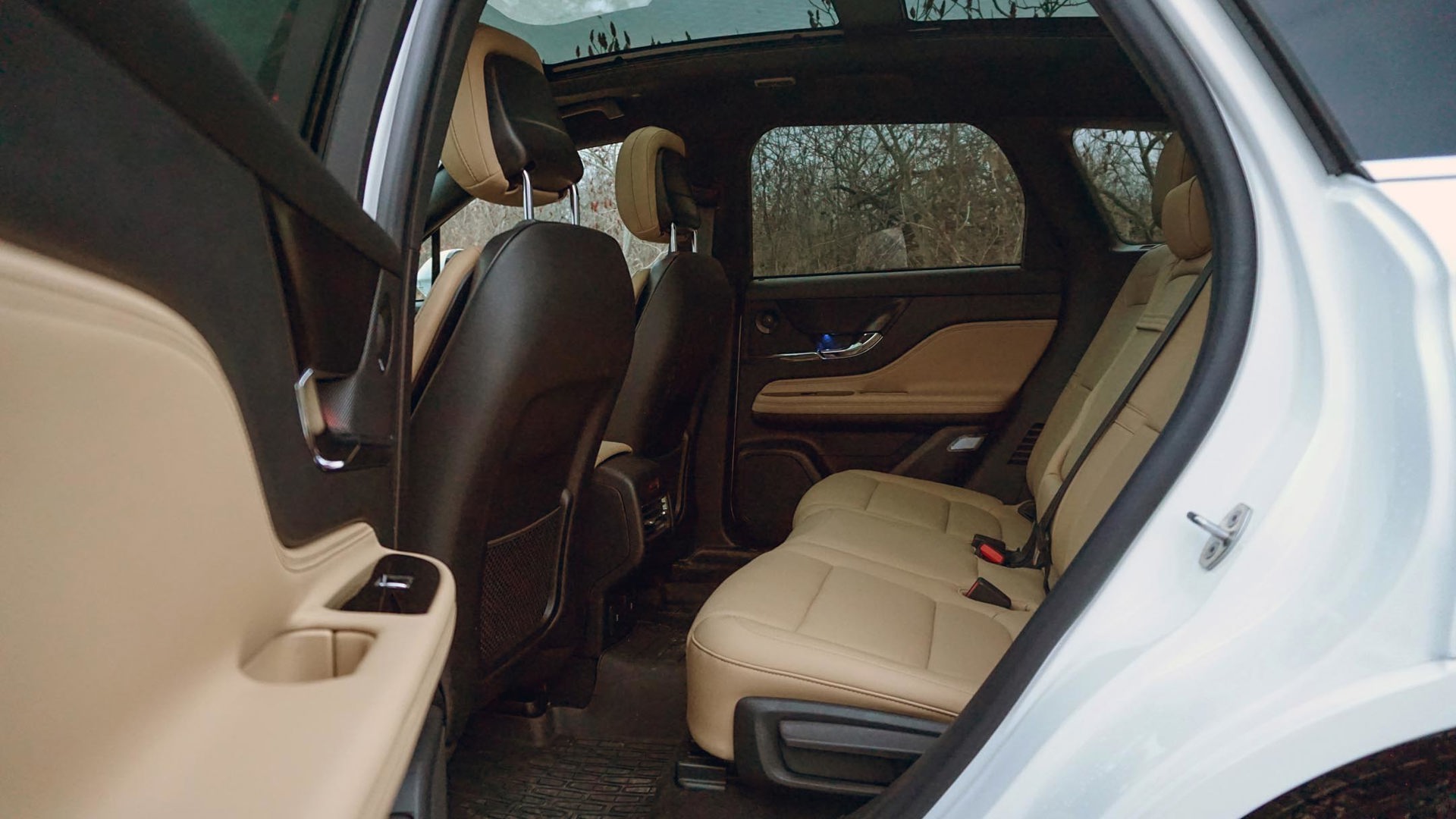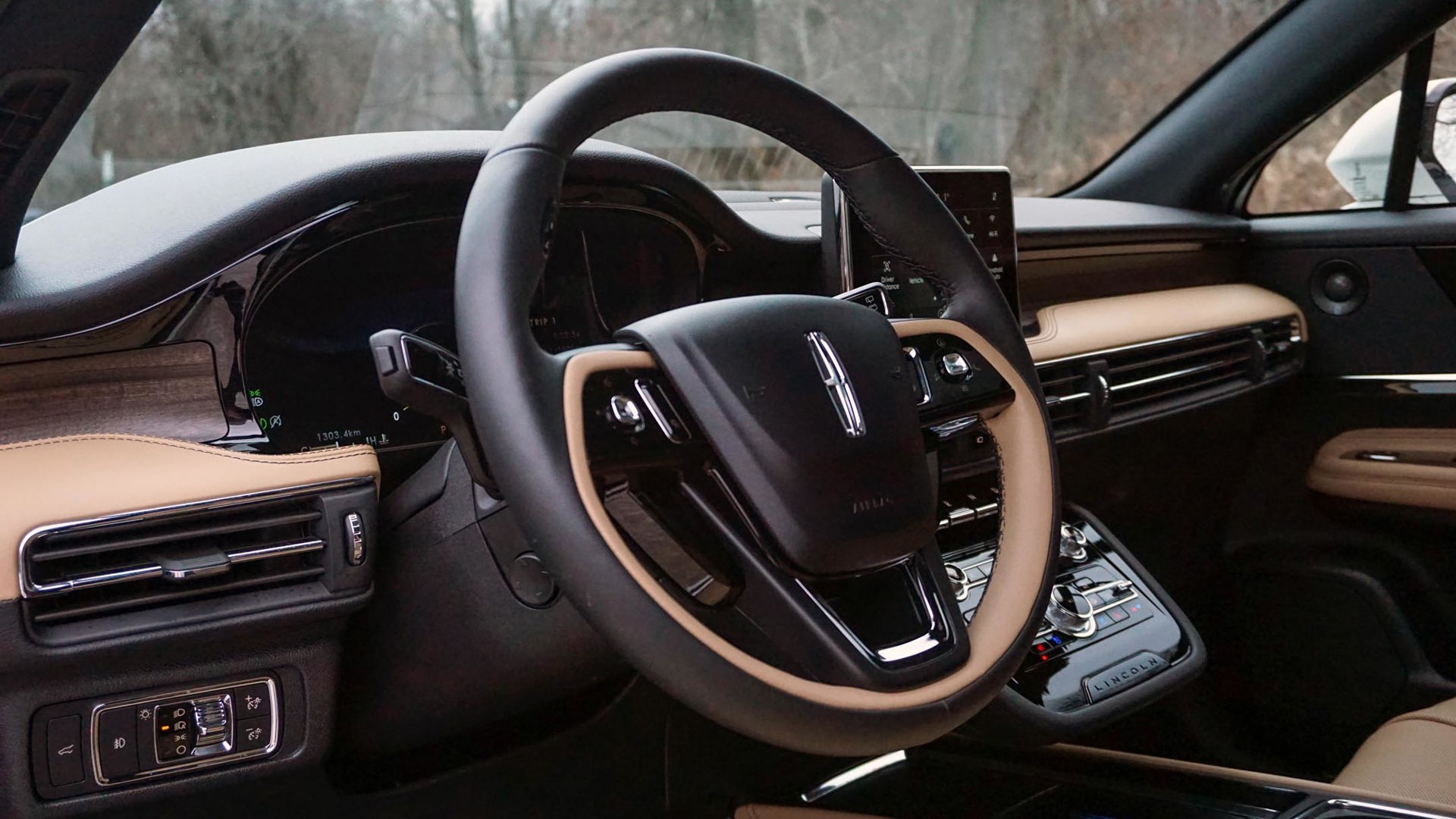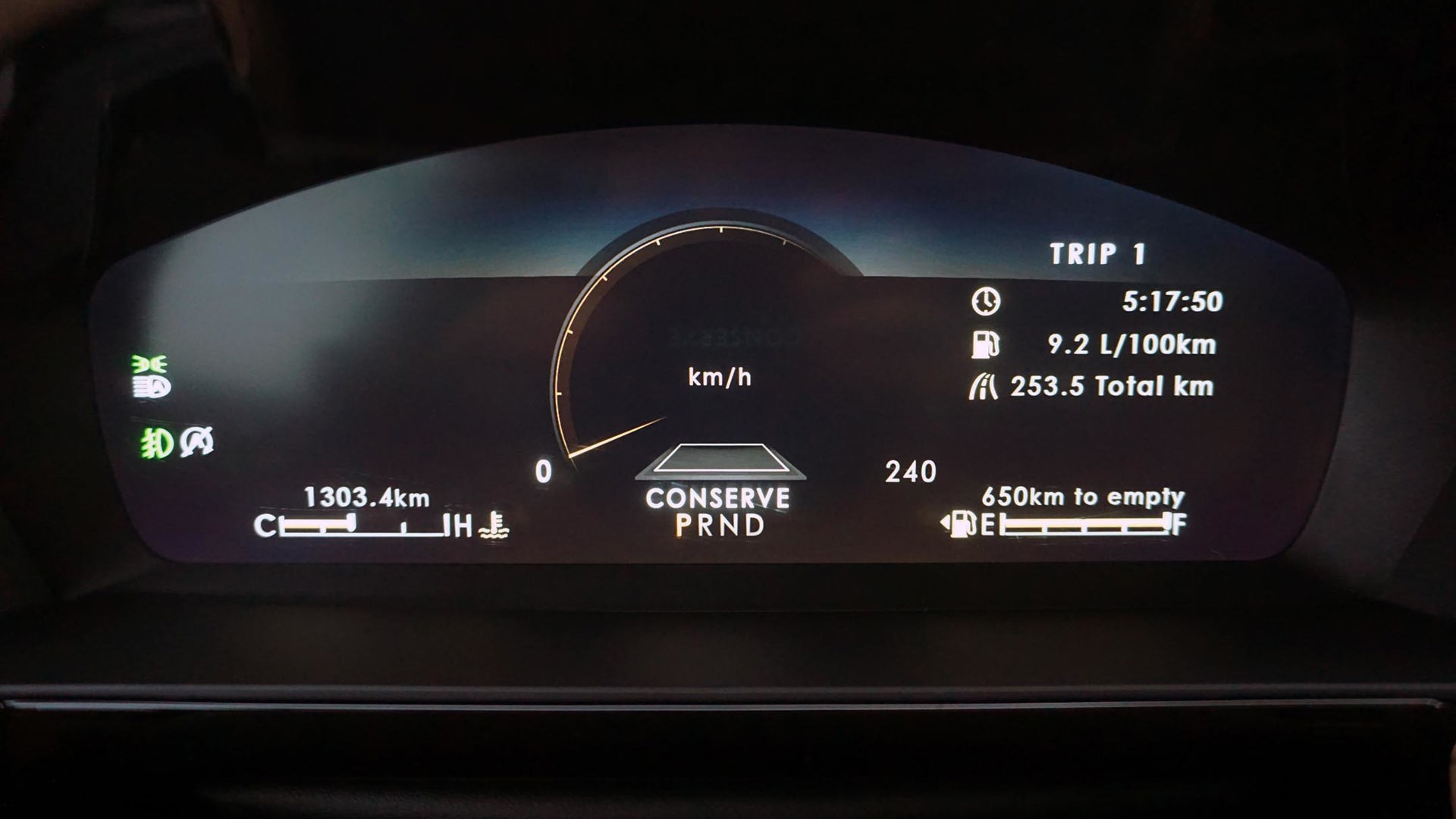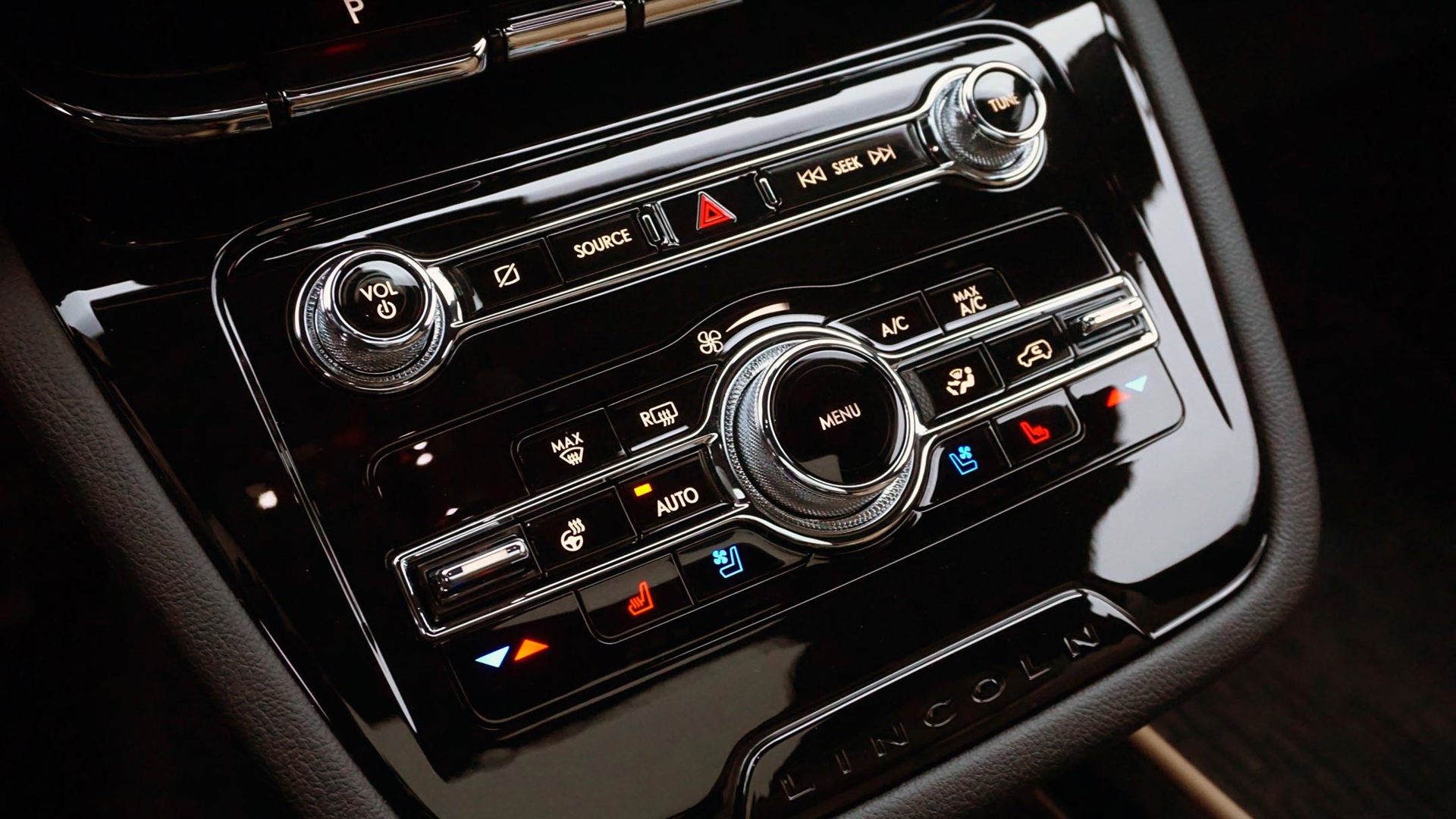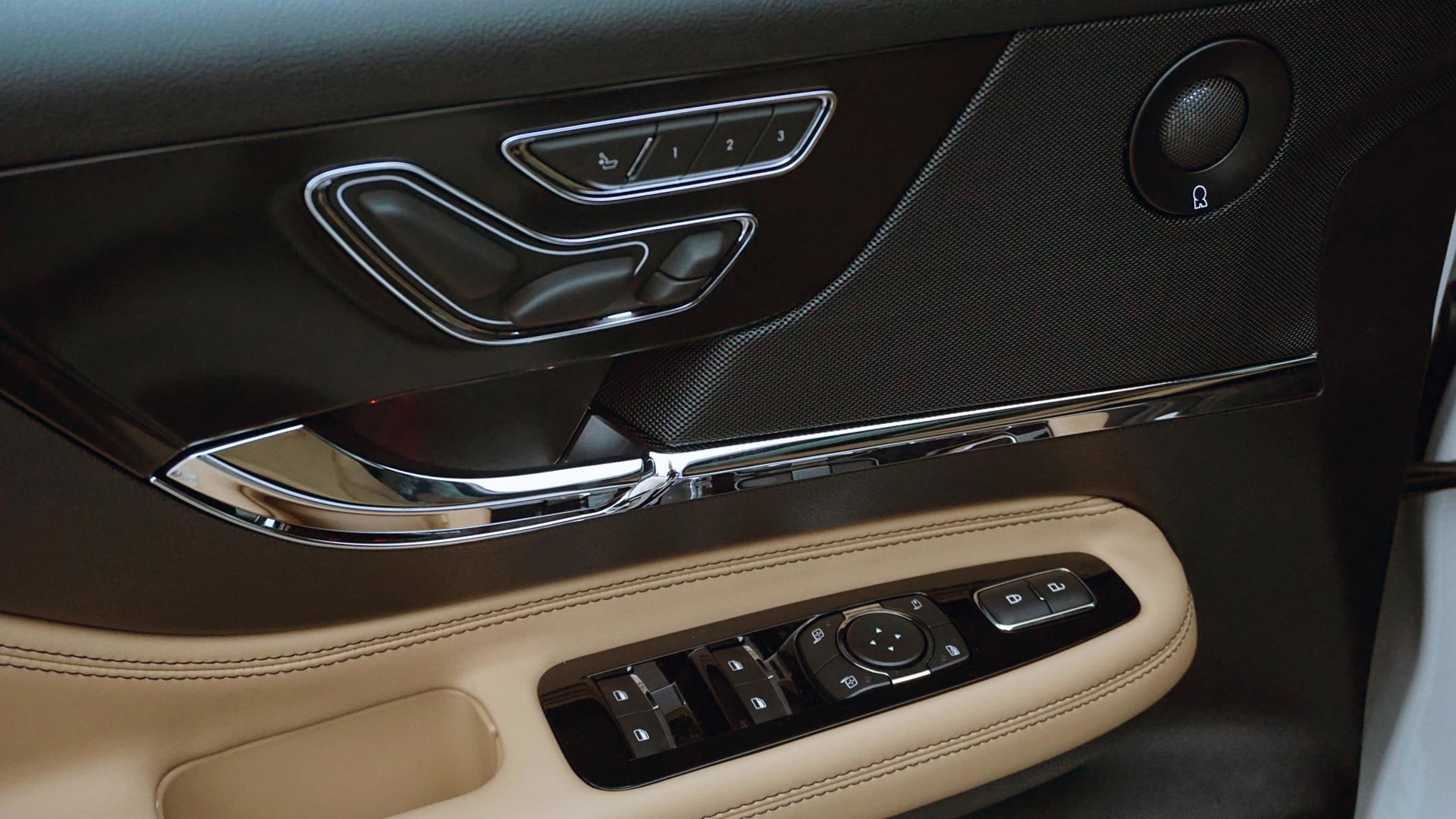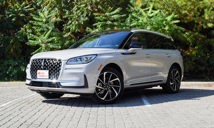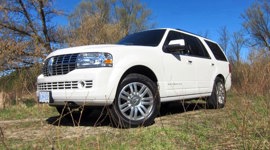 AutoTrader SCORE
AutoTrader SCORE
-
STYLING8/10
-
Safety9/10
-
PRACTICALITY8/10
-
USER-FRIENDLINESS9/10
-
FEATURES9/10
-
POWER8/10
-
COMFORT9/10
-
DRIVING FEEL7/10
-
FUEL ECONOMY7/10
-
VALUE7/10
It’s taken a little longer than it should have, but it seems Lincoln has finally found its way forward.
In an attempt to turn heads in the hotly contested premium market, it’s forging ahead with nothing but SUVs – and it’s doing so with much more than rebadged mainstream models stuffed with swathes of upgraded leather. Make no mistake: there’s no shame in the brand sharing platforms or powertrains with Ford products. But there’s an expectation that the experience provided by Lincoln’s lineup should be special, or at the very least unique.
As much of the competition sets out to make their entries in the small SUV segment sporty and engaging, the 2021 Lincoln Corsair is unmistakable old-school luxury. It just happens to be wrapped up in a modern package.
Styling: 8/10
This smallest sport utility in the Lincoln lineup boasts one of the most inoffensive designs around, yet it’s certainly stylish. It looks a lot like a shrunken-down version of its larger siblings – it most closely resembles the Nautilus that sits directly above it in the lineup – and uses subtle cues to stand out. The grille adorned in repeating Lincoln logos is a unique touch, while its pricey body-colour finish on this tester ($2,250 monochromatic pack) makes it even more so.
There’s certainly no mistaking the cabin for anything in the Ford lineup, either, with a look all its own. The space is far from perfect, however, and suffers the longstanding misreading of what luxury means by American automakers. There’s simply nothing prestigious or premium about gloss black plastic, yet the Corsair is filled with it. The material doesn’t look especially impressive, and it only serves to make fingerprints and smudges stand out.
Some of the other plastics inside, like the stuff used to make the steering-wheel-mounted paddle shifters, simply have no place in a vehicle with a premium price tag. But then there’s the Reserve trim’s leather upholstery that wouldn’t be out of place in an even more expensive machine. Video producer extraordinaire Will Johnson was particularly impressed with this Corsair’s caramel-coloured cowhide, which is but one of five hues offered, including a unique blue.
Comfort: 9/10
Of course, the seats inside a vehicle like this can’t just look the part – they have to play it, too. The upgraded chairs in this tester come reasonably priced at $1,500 and are some of the best on the market. With a whopping 24 ways of adjustability up front, settling in for long stretches of highway driving takes little more than a few taps of the touchscreen. And while there’s more unappealing plastic around the tops of the chairs and down their sides, it’s forgivable here for it houses the motors that run the massage functions for both driver and passenger.
Another upgrade worth paying for is the adaptive suspension that’s offered as part of a pricey package, or as a standalone $1,250 option. There are no settings to manipulate; simply allow the outstanding dampers to work their magic. In fact, it was only the outsized 20-inch wheels that amplified road imperfections – otherwise, the Corsair’s ride quality is superb.
Driving Feel: 7/10
With an emphasis on sporty driving dynamics in just about every other entry on the market, the Corsair remains squarely focused on delivering a relaxed and comfortable ride. Quite frankly, it’s refreshing in a way, trading sharp steering for something much more subdued. Much like the suspension, it’s perfectly tailored to the character of this little Lincoln. While it might not satisfy those after something engaging to drive, the disposition is distinct for its conventional approach to luxury.
Power: 8/10
Likewise, the engine offerings are ideal, with a pair of turbocharged four-cylinders to pick from. With the exception of those who plan to tow – the Corsair can pull 1,361 kg (3,000 lb) regardless of what powers it, though the extra torque of the 2.3L makes it the better pick in that regard – the smaller 2.0L motor should suit most drivers just fine.
It’s the same four-cylinder that’s available in the Ford Escape, and it generates an identical 250 hp and 280 lb-ft of torque. That latter number isn’t reached until 3,000 rpm, which is rather late for a modern turbo motor, but it’s perfectly adequate for motivating this 1,747-kg (3,851-lb) machine. Throttle response is fairly swift despite the initial bout of turbo lag, the Corsair getting where it needs to in reasonable time.
With a fully automatic all-wheel drive system channelling engine output to the ground, it’s only the transmission that’s a letdown, the eight-speed automatic firing off the occasional clunky gear change – particularly with the drive mode dial in its eco setting. Overall, it’s also not as smooth or refined as something in this segment should be, feeling somewhat coarse compared to most others on the premium market.
Fuel Economy: 7/10
It’s something of a surprise that Lincoln opted not to offer the outstanding gas–electric powertrain found in the Escape Hybrid, which sips fuel like a compact car even with its optional all-wheel drive. Instead, this 2.0L-powered Corsair is rated for a rather average 9.8 L/100 km combined by Natural Resources Canada (NRCan). Meanwhile, a weeklong evaluation covering 660 km ended with a final tally of 9.9 L/100 km.
While the Corsair is recommended to run on a steady diet of premium-grade gasoline, 87-octane can be used, according to the owner’s manual. Of course, the engine won’t generate the same peak output, and it’s likely to burn fuel at a higher rate than it would with more expensive stuff in the tank, but it’s a cheap trick to save a few bucks. That also makes it unique in the segment, as just about every one of its premium peers is built to run on 91-octane or better.
Practicality: 8/10
As far as hauling cargo is concerned, the Corsair looks good on paper next to any one of its competitors. The 780 L behind the back seats surpasses the Mercedes-Benz GLC-Class and Lexus NX, among most of the rest of the pack. In practice, however, the little Lincoln doesn’t do much to stand out, boasting similar space to just about any entry in its class, including the NX 300. To complicate matters even more, it might have slightly less room than the GLC 300 despite what their spec sheets say.
Passenger space is also about the same as its rivals, feeling like a larger vehicle in both rows of seats. There’s also plenty of storage for smaller items, with big door pockets, and a couple different console bins to stash stuff.
User Friendliness: 9/10
The extra storage is afforded by the shift-by-wire system that does away with the linkage required of a conventional gear selector. With that stuff gone, the Corsair features toggles to engage park, reverse, and drive. It’s the type of system that’s in vogue these days but comes with something of a learning curve. This one in particular befuddled your author all week long during testing; its integration into the dashboard is clever from a design perspective but counterintuitive for daily use.
Better in that regard is the switchgear for air conditioning and audio functions that floats beneath the gear selection buttons. While the material it’s all made of isn’t especially appealing – again, it’s more glossy black plastic – the assortment of physical buttons and dials is as simple as it gets. Then there’s the infotainment system above it all that appears a bit like an afterthought in the way it’s perched on the dash but is easy to use. Smartphones can be paired to either Android Auto or Apple CarPlay via USB-A or USB-C ports, while the eight-inch touchscreen is quick to respond to inputs.
The steering wheel, too, features its own set of controls, and while it appears slightly unorthodox at first glance, it’s all rather intuitive. Joysticks on each side are used for volume and tune or infotainment functions, respectively, while a button for the voice recognition system sits at the 10 o’clock position (though it was unintentionally engaged on more than a few occasions during testing). Finally, there are the buttons for the available adaptive cruise control that are darkened until the system is engaged, at which point illuminating with easy-to-read labels for the various settings.
Safety: 9/10
That adaptive cruise control system – it’s standard with the 2.3L engine but optional with the 2.0L – works well to regulate the Corsair’s speed with any vehicles ahead of it and uses a lane-centring function to help keep it in its lane of travel. However, having spent the week prior driving the 2021 Nissan Rogue with its outstanding steering-assist system, Lincoln’s isn’t quite as refined, constantly applying micro-corrections rather than fluid motion like Nissan’s.
Models without adaptive cruise control still get a conventional system along with lane-keep assist, blind-spot monitoring, and forward automatic emergency braking. They also come fitted with an assortment of airbags, rear parking sensors, and LED lighting all around, including automatic high-beam headlights. Upgrading the advanced safety suite adds adaptive cruise with lane-centring and traffic sign recognition and reverse automatic braking, while rain-sensing wipers, a head-up display, and a self-parking system are also available.
Features: 9/10
The Corsair is offered in two trims, Standard or Reserve, the former of which comes decently equipped for its $44,700 starting price. The seats are heated up front, though they come wrapped in synthetic leather instead of the real stuff (at least any of the three interior colour choices are no-charge options). There’s also the eight-inch infotainment system with built-in navigation, Apple CarPlay and Android Auto, and satellite radio.
Of course, upgrading to the Reserve model brings with it all kinds of niceties – though not all of it’s standard. Yes, it gets leather seats and an upgraded 14-speaker stereo; but ventilated front seats, heated rear seats, and adaptive cruise control all must be added as extras. Then again, the very fact that stuff and more is offered makes the Corsair competitive with the rest of the segment, while the available massaging seats make it rare.
Value: 7/10
Unfortunately, it’s also among the most expensive of the bunch when decked out in its finest duds. The Corsair cuts deep into the heart of one of the most popular segments on the market, competing against just about every brand in the business – currently, the only outlier is Genesis, though the GV70 is on its way – but it’s priced at the top end of the spectrum.
The Lexus NX 300 with its Executive package is $58,350 before fees and taxes and offers just about everything the Corsair does with the exception of massaging seats. Likewise, a loaded Acura RDX Platinum Elite is $54,390 and comes with most of the same features.
The Lincoln Corsair Reserve, meanwhile, starts at $50,500, but all the equipment seen here – the exterior styling package, adaptive suspension, massaging seats, and head-up display – push the price to a whopping $64,600 before freight and taxes. And it can get pricier still with the 2.3L engine and options. By comparison, a decked-out BMW X3 xDrive30i is $64,650. It’s really only the Mercedes GLC 300 and Cadillac XT5 that can cost slightly more with similar equipment.
The Verdict
For those put off by the way performance has come to define the premium market in recent years, the 2021 Lincoln Corsair should be refreshing at the very least. It’s honest-to-goodness, old-school luxury, but it’s delivered in a right-sized sport utility that’s spacious inside and easy to drive.
Unfortunately, some of the interior materials don’t look or feel quite as nice as the stuff offered by competitors, and it can get quite expensive once extras are added. But – and this is a pretty big caveat – not many other SUVs of its kind keep it this simple when it comes to traditional luxury. And if that makes the list of must-haves, it just might be worth paying for.
| Engine Displacement | 2.0L |
|---|---|
| Engine Cylinders | Turbo I4 |
| Peak Horsepower | 250 hp @ 5,500 rpm |
| Peak Torque | 280 lb-ft @ 3,000 rpm |
| Fuel Economy | 11.1 / 8.1 / 9.8 L/100 km cty/hwy/cmb |
| Cargo Space | 780 / 1,631 L seats up/down |
| Model Tested | 2021 Lincoln Corsair Reserve |
| Base Price | $50,500 |
| A/C Tax | $100 |
| Destination Fee | $2,150 |
| Price as Tested | $66,850 |
|
Optional Equipment
$14,100 – Equipment Group 201A, $4,500; Technology Package, $3,500; Monochromatic Package, $2,250; 24-Way Perfect Position Seats, $1,500; Adaptive Suspension, $1,250; Pristine White Paint, $900; All-Weather Floor Liners, $200
|
|
